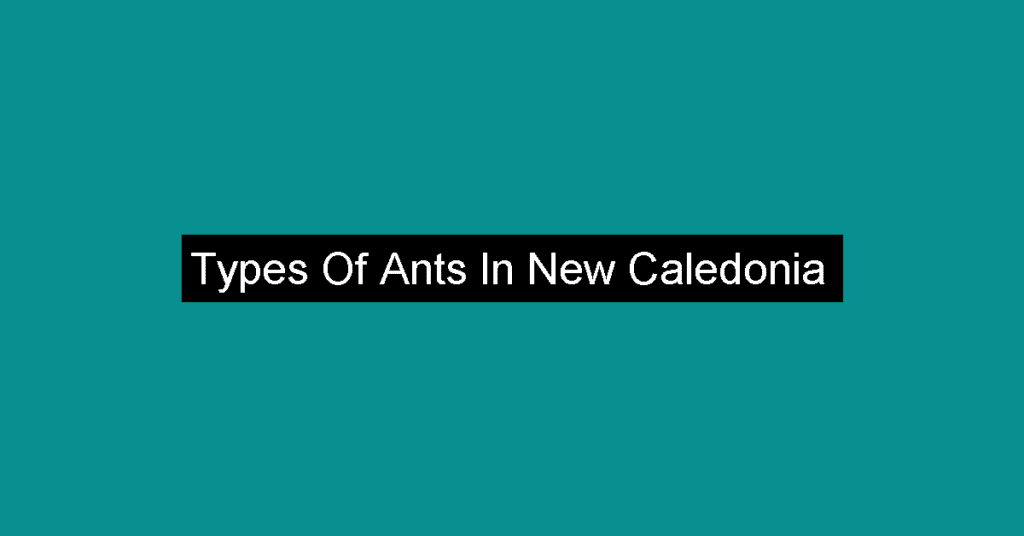New Caledonia, a French territory located in the southwest Pacific Ocean, is a land of diverse landscapes and unique wildlife. The region boasts a tropical climate with warm temperatures year-round, making it a popular destination for tourists seeking sun, sand, and sea.
The environment of New Caledonia is home to a variety of flora and fauna, including rare species of birds, reptiles, and marine life. The coral reefs surrounding the islands are some of the most diverse and pristine in the world, providing a habitat for countless species of fish and other marine creatures.
Despite its small size, New Caledonia is a treasure trove of natural wonders, offering visitors a glimpse into the beauty and complexity of the natural world. .
Types Of Ants In New Caledonia
The Types Of Ants In New Caledonia are listed here: Coccid-Tending Ants, Adelomyrmex, Amblyopone, Trap-Jaw Ants, Anoplolepis, Funnel Ants, Bothriomyrmex, Rover Ants, Calomyrmex, Calyptomyrmex, Carpenter And Sugar Ants, Sneaking Ants, Marauder Ants, Army Ants, Acrobat Ants, Cryptic Ants, Discothyrea, Dolly Ants, Driver Ants, Echinopla, Epopostruma, Eurhopalothrix, Gnamptogenys, Heteroponera, Crypt Ants, Iridomyrmex, Leptanilla, Razorjaw Ants, Leptomyrmex, Liomyrmex, Lordomyrma, Loweriella, Mayriella, Shield Ants, Metapone, Trailing Pharaoh And Timid Ants, Myopias, Myrmecia, Nesomyrmex, Notostigma, Crazy Ants, Ochetellus, Trap-Jaw Ants, Orectognathus, Paraparatrechina, Paratopula, Crazy Ants, Big Headed Ants, Pheidologeton, Philidris, Restless Ants, Platythyrea, Podomyrma, Spiny Ants, Porthole Ants, Prionopelta, Pristomyrmex, Probolomyrmex, Hairy Curltail Ants, Pseudolasius, Rhopalothrix, Fierce Pennet And Pavement Ants, Rhytidoponera, Romblonella, Simopone, Fire Ants, Sphinctomyrmex, Miniature Trap-Jaw Ants, Tapinoma, Pale-Footed Ants, Pavement Ants, Old World Slender Ants, Turneria, Vollenhovia, Vombisidris, Wasmannia, Emerys Sneaking Ants, Crypt Ants, Flower Ants, Pharaoh Ants, Ochetellus Glaber, Ochetellus Glaber Janthina, Ochetellus Glaber Sommeri, Longhorn Crazy Ants, Big Headed Ants, Tropical Fire Ants, Ghost Ants, Pale-Footed Ants, Guinea Ants, Pavement Ants, Groove-Headed Fierce Ants, Little Fire Ants.
If you’ve found some other ants in this region, contact us, and we will add them to the list!
1) Coccid-Tending Ants, Acropyga
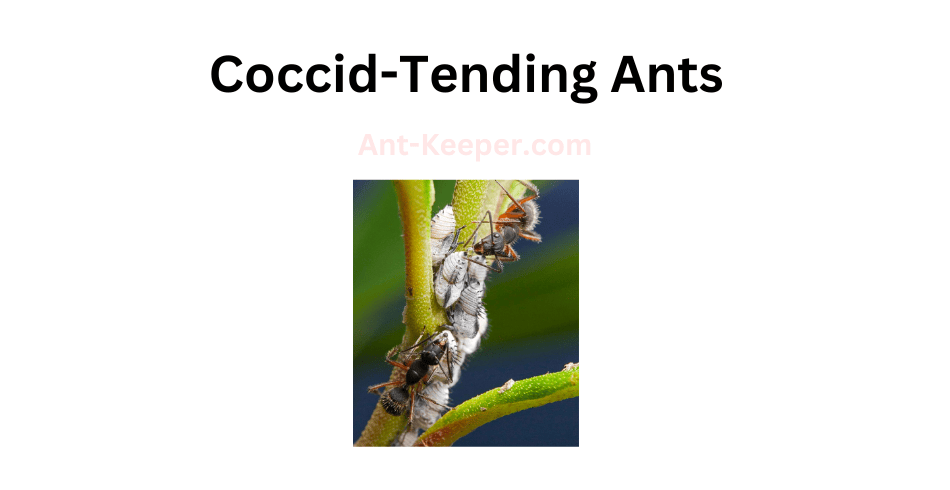
Coccid-tending ants are a group of ants that have a mutualistic relationship with coccids, also known as scale insects.
These ants protect and care for the coccids, which in turn provide the ants with a sugary substance called honeydew.
Coccid-tending ants are typically small in size, ranging from 2 to 5 millimeters in length.
They have a reddish-brown coloration and a slender body shape.
These ants are commonly found in forests and grasslands, where they build nests in soil or under rocks.
The relationship between coccid-tending ants and coccids is a classic example of mutualism.
The ants protect the coccids from predators and parasites, and also move them to new feeding sites when necessary.
In return, the coccids secrete honeydew, which the ants consume as a source of energy.
Coccid-tending ants have been observed to actively farm and cultivate coccids, moving them to new locations and even pruning the plants on which they feed to encourage the growth of new coccids.
This behavior has been shown to increase the overall productivity of the ant-coccid mutualism.
Overall, coccid-tending ants are an important component of many ecosystems, playing a key role in the maintenance of plant and insect populations.
Their mutualistic relationship with coccids highlights the complex and interconnected nature of ecological systems.
2) Adelomyrmex
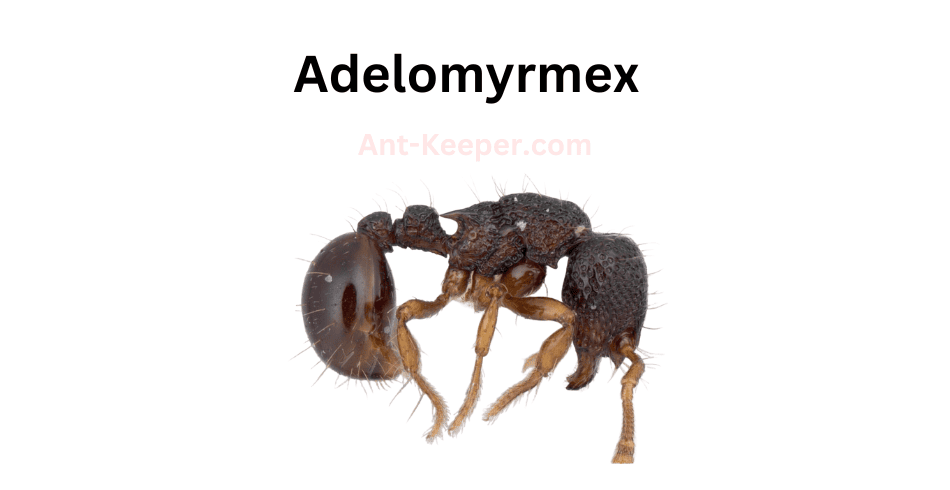
Adelomyrmex is a genus of ants that belongs to the subfamily Myrmicinae.
These ants are known for their unique morphology and behavior.
Adelomyrmex ants are small in size, measuring between 2 to 4 millimeters in length.
They have a distinctive appearance, with a slender body and long legs.
The head of Adelomyrmex ants is elongated and narrow, with large compound eyes and long antennae.
Adelomyrmex ants are social insects that live in colonies.
The colonies are usually small, consisting of a few hundred individuals.
The colonies are typically found in the soil, under rocks, or in dead wood.
Adelomyrmex ants are known for their aggressive behavior towards other ant species.
They will attack and kill other ants that invade their territory.
Adelomyrmex ants are omnivorous, feeding on a variety of food sources.
They will consume insects, nectar, and honeydew produced by aphids.
Adelomyrmex ants are also known to tend to mealybugs, protecting them from predators in exchange for their sweet secretions.
The reproductive system of Adelomyrmex ants is unique.
The colonies are headed by a single queen, who is responsible for laying eggs.
However, the queen does not mate with males.
Instead, she reproduces asexually, producing genetically identical offspring.
In conclusion, Adelomyrmex ants are fascinating insects with unique morphology and behavior.
They are aggressive towards other ant species and have a unique reproductive system.
These ants play an important role in their ecosystem, consuming insects and tending to mealybugs.
3) Amblyopone
Amblyoponebe is a species of ant that belongs to the Amblyoponinae subfamily.
These ants are known for their unique physical characteristics, including their elongated mandibles and flattened heads.
They are typically small in size, measuring only a few millimeters in length.
Amblyoponebe ants are primarily found in forested areas, where they live in underground nests.
They are known to be solitary hunters, preying on other insects and arthropods.
Their elongated mandibles are used to capture and subdue their prey, which they then carry back to their nests to feed on.
Despite their small size, Amblyoponebe ants are known for their aggressive behavior.
They are not afraid to defend their nests and will attack any intruders that come too close.
This makes them a formidable opponent for other insects and animals that may try to invade their territory.
Overall, Amblyoponebe ants are a fascinating species that play an important role in their ecosystem.
Their unique physical characteristics and aggressive behavior make them a fascinating subject for researchers and nature enthusiasts alike.
4) Trap-Jaw Ants, Anochetus
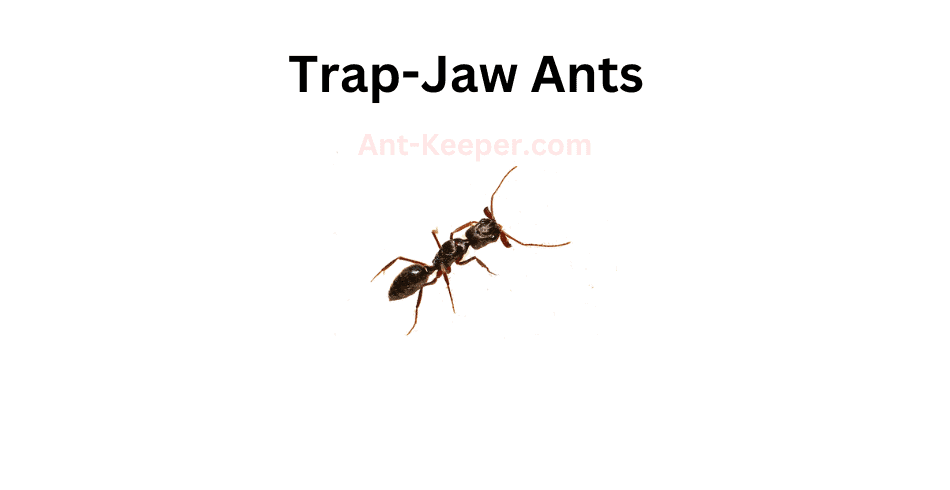
Trap-jaw ants are a species of ants that belong to the genus Odontomachus.
These ants are known for their unique and powerful mandibles, which they use to capture prey and defend their colonies.
The mandibles of trap-jaw ants are capable of closing at incredible speeds, reaching up to 140 miles per hour.
This allows them to snap their jaws shut with incredible force, which can stun or kill their prey.
Trap-jaw ants are found in a variety of habitats, including forests, grasslands, and deserts.
They are typically active during the day and are known to be highly territorial.
These ants are also known for their ability to jump, which they use to escape danger or to capture prey.
Trap-jaw ants are omnivorous, meaning that they eat both plant and animal matter.
They are known to feed on a variety of insects, including other ants, as well as nectar and other sweet substances.
These ants are also known to be scavengers, feeding on dead insects and other organic matter.
The colonies of trap-jaw ants are typically small, with only a few hundred individuals.
However, they are highly organized and have a strict social hierarchy.
The queen is the largest member of the colony and is responsible for laying eggs.
The workers, which are all female, are responsible for foraging, caring for the young, and defending the colony.
Overall, trap-jaw ants are fascinating creatures that have evolved unique adaptations to help them survive in their environments.
Their powerful mandibles and jumping abilities make them formidable predators, while their social organization allows them to work together to protect their colonies and ensure their survival.
5) Anoplolepis
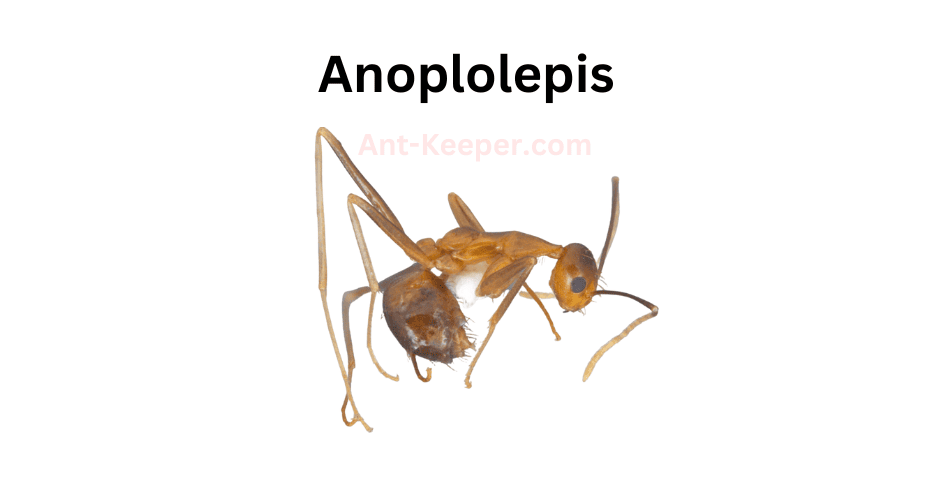
Anoplolepis is a genus of ants that belongs to the subfamily Formicinae.
The most well-known species in this genus is Anoplolepis gracilipes, commonly known as the yellow crazy ant.
These ants are known for their aggressive behavior and ability to form large colonies.
Anoplolepis ants are small in size, measuring between 2-3 mm in length.
They have a yellowish-brown coloration and a slender body shape.
Their mandibles are long and curved, which they use to capture prey and defend their colony.
These ants are omnivorous, feeding on a variety of food sources including insects, nectar, and honeydew.
They are also known to be attracted to sweet substances and can become a nuisance in households.
Anoplolepis ants are highly adaptable and can thrive in a variety of environments, including forests, grasslands, and urban areas.
They are known to form supercolonies, which can consist of millions of individuals.
These supercolonies can have a significant impact on the ecosystem, as they can displace native ant species and disrupt the balance of the food chain.
Overall, Anoplolepis ants are fascinating creatures with unique behaviors and adaptations.
While they can be a nuisance in households, they play an important role in the ecosystem and are an important subject of study for scientists.
6) Funnel Ants, Aphaenogaster
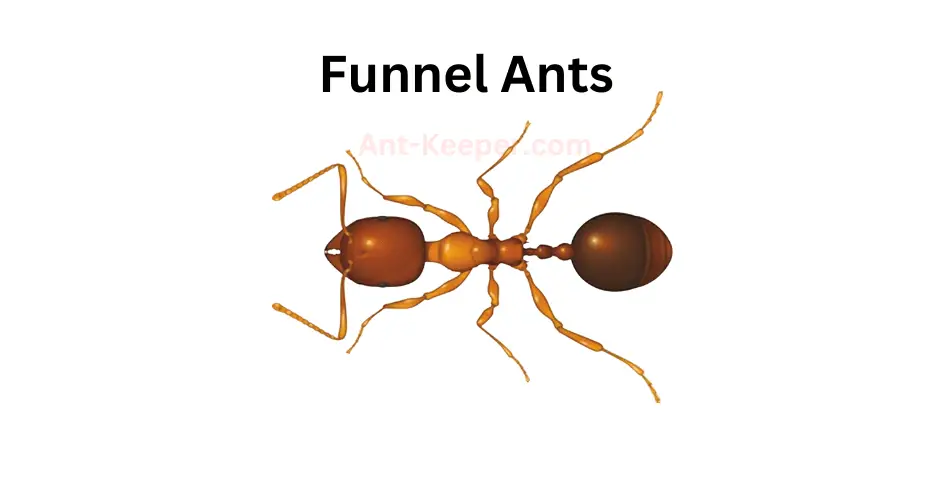
The Funnel Ants, also known as Aphaenogaster ants, are a species of ants that are commonly found in various habitats around the world.
These ants are known for their unique nesting behavior, where they construct funnel-shaped nests that are typically located in soil or leaf litter.
The Funnel Ants are relatively small in size, with workers measuring between 3-5mm in length.
They are typically reddish-brown in color and have a slender body shape.
These ants are known for their strong mandibles, which they use to collect and transport food back to their nests.
One of the most interesting aspects of the Funnel Ants is their nesting behavior.
These ants construct funnel-shaped nests that are typically located in soil or leaf litter.
The entrance to the nest is narrow and funnel-shaped, which helps to protect the colony from predators and other threats.
Inside the nest, the ants create a series of chambers and tunnels that are used for different purposes, such as storing food, caring for the brood, and housing the queen.
The Funnel Ants are omnivorous, meaning that they feed on both plant and animal matter.
They are known to collect a wide variety of food items, including seeds, insects, and other small invertebrates.
These ants are also known to tend to aphids, which they use for their honeydew secretion.
Overall, the Funnel Ants are a fascinating species of ants that are known for their unique nesting behavior and omnivorous diet.
They play an important role in their ecosystems, helping to control populations of other insects and contributing to nutrient cycling in the soil.
7) Bothriomyrmex

Bothriomyrmex is a genus of ants that belongs to the family Formicidae.
The ants in this genus are small in size, measuring between 2-4 mm in length.
They are known for their distinctive appearance, with a narrow waist and a long, curved spine on their thorax.
Bothriomyrmex ants are typically found in tropical and subtropical regions, where they live in colonies that can range in size from a few dozen to several hundred individuals.
They are known for their aggressive behavior and will defend their nests fiercely against intruders.
These ants are omnivorous, feeding on a variety of foods including insects, nectar, and plant sap.
They are also known to tend to aphids and other insects that produce honeydew, which they collect and consume.
Bothriomyrmex ants are important members of their ecosystems, playing a role in seed dispersal and soil aeration.
They are also preyed upon by a variety of predators, including birds, reptiles, and other insects.
Overall, Bothriomyrmex ants are fascinating creatures that play an important role in the ecosystems where they live.
Their unique appearance and behavior make them a subject of interest for scientists and nature enthusiasts alike.
8) Rover Ants, Brachymyrmex

Rover ants, also known as Brachymyrmex spp., are a species of small, dark-colored ants that are commonly found in urban and suburban areas.
These ants are known for their ability to quickly move their nests from one location to another, hence their name "rover ants."
Rover ants are typically between 1.5 and 2.5 millimeters in length and have a dark brown or black coloration.
They have a slender body with a distinct waist and long, thin legs.
These ants are known for their aggressive behavior towards other ant species and will often invade and take over their nests.
Rover ants are omnivorous and will feed on a variety of food sources, including insects, sweets, and plant material.
They are also known to be attracted to human food and can become a nuisance in homes and other buildings.
One unique characteristic of rover ants is their ability to form "supercolonies." These supercolonies can consist of multiple nests and can span large areas.
This behavior allows rover ants to quickly adapt to changing environments and find new food sources.
Overall, rover ants are a common and adaptable species that can be found in many different environments.
While they can be a nuisance in homes and other buildings, they play an important role in the ecosystem as scavengers and predators of other insects.
9) Calomyrmex
Calomyrmex is a genus of ants belonging to the family Formicidae.
These ants are known for their unique physical characteristics, including their elongated mandibles and slender bodies.
The workers of Calomyrmex are typically small in size, measuring between 2-4mm in length.
They are typically black or dark brown in color, with a shiny exoskeleton.
Calomyrmex ants are primarily found in tropical and subtropical regions, where they inhabit a variety of habitats including forests, grasslands, and savannas.
They are known to be highly aggressive and territorial, often engaging in fierce battles with other ant species.
One of the most interesting aspects of Calomyrmex ants is their social behavior.
These ants live in large colonies, with a single queen responsible for laying eggs and producing new workers.
The workers are responsible for foraging for food, caring for the young, and defending the colony from predators.
Calomyrmex ants are also known for their unique feeding habits.
They are omnivorous, feeding on a variety of food sources including insects, nectar, and plant sap.
They are also known to engage in a behavior known as trophallaxis, where they exchange food and other nutrients with other members of the colony.
Overall, Calomyrmex ants are fascinating creatures with a unique set of physical and behavioral characteristics.
Their aggressive nature and social behavior make them an important species to study in the field of entomology.
10) Calyptomyrmex
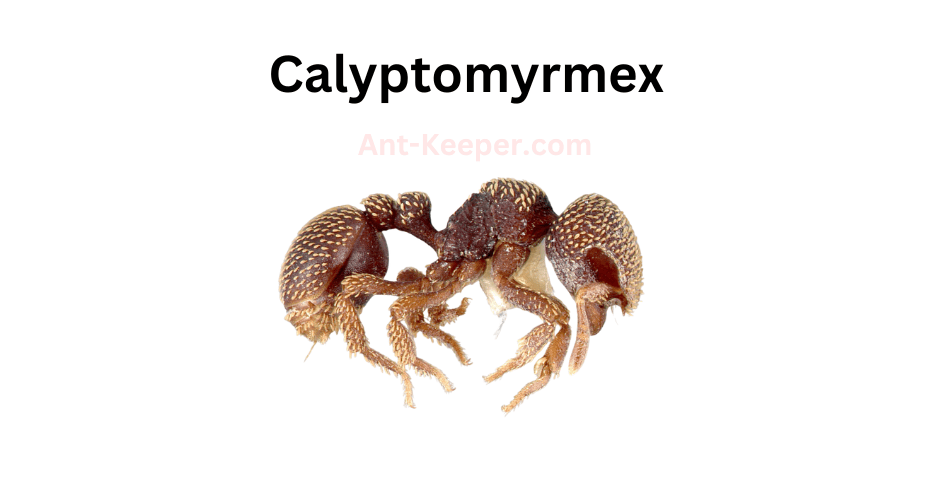
Calyptomyrmex is a genus of ants belonging to the subfamily Myrmicinae.
These ants are known for their unique morphology, which includes a distinctively shaped head and a flattened, shield-like structure on the thorax.
The genus is relatively small, with only a few known species.
Calyptomyrmex ants are typically found in forested areas, where they nest in soil or leaf litter.
They are known to be predatory, feeding on other insects and small invertebrates.
These ants are also known to have a mutualistic relationship with certain species of plants, where they protect the plants from herbivores in exchange for food and shelter.
One of the most interesting aspects of Calyptomyrmex ants is their social behavior.
These ants are highly organized, with a clear division of labor among the members of the colony.
The queen is responsible for laying eggs, while the workers are responsible for foraging, caring for the young, and defending the colony.
Overall, Calyptomyrmex ants are fascinating creatures that play an important role in their ecosystems.
Their unique morphology, predatory behavior, and social organization make them a subject of interest for researchers and nature enthusiasts alike.
11) Carpenter And Sugar Ants, Camponotus

Carpenter ants and sugar ants are two common species of ants found in many regions of the world.
Carpenter ants are known for their ability to excavate wood and create nests within it.
They are typically larger in size than sugar ants and have a black or dark brown coloration.
Carpenter ants are also known for their strong mandibles, which they use to chew through wood and other materials.
Sugar ants, on the other hand, are smaller in size and have a yellow or brown coloration.
They are named for their preference for sugary foods and are often found in kitchens and other areas where food is stored.
Sugar ants are also known for their ability to form large colonies, with thousands of individual ants working together to gather food and care for their young.
Both carpenter ants and sugar ants play important roles in their ecosystems.
Carpenter ants help to break down dead wood and other plant material, which helps to recycle nutrients back into the soil.
Sugar ants help to disperse seeds and pollinate plants, which helps to maintain healthy ecosystems.
However, both species can also be pests when they invade human homes and buildings.
Carpenter ants can cause damage to wooden structures, while sugar ants can contaminate food and be a nuisance to homeowners.
It is important to take steps to prevent ant infestations and to control them if they do occur, in order to protect both human health and the health of the environment.
12) Sneaking Ants, Cardiocondyla
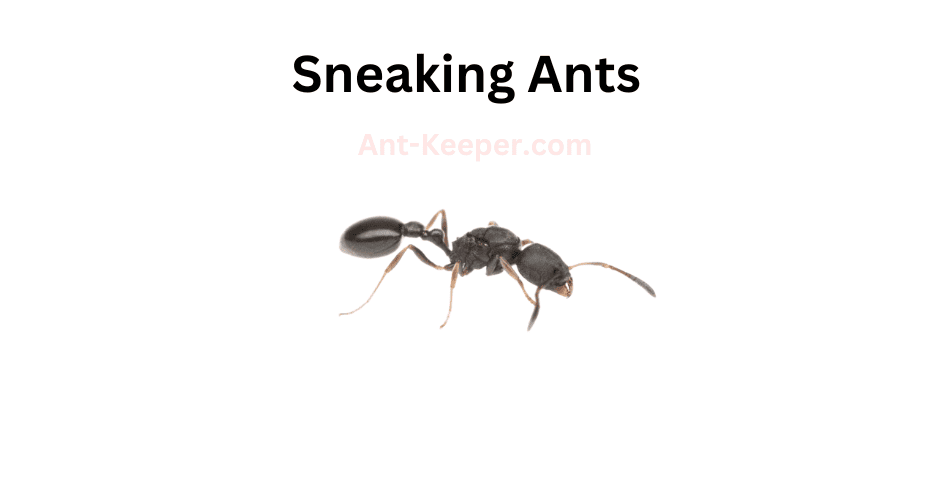
Sneaking Ants, also known as Camponotus obscuripes, are a species of ant that are commonly found in forested areas.
These ants are known for their ability to move quietly and quickly, making them difficult to detect.
Sneaking Ants are typically black or dark brown in color and range in size from 5 to 12 millimeters in length.
They have a distinctive, flattened head and a narrow waist, which helps them to navigate through tight spaces.
One of the most interesting aspects of Sneaking Ants is their behavior.
These ants are known for their ability to sneak up on other insects and steal their food.
They are also known to raid the nests of other ant species, taking their eggs and larvae back to their own colony to raise as their own.
Sneaking Ants are omnivorous, meaning they eat both plant and animal matter.
They have been observed feeding on nectar, honeydew, and small insects.
They are also known to scavenge for food, often taking advantage of the leftovers from other insects.
In terms of reproduction, Sneaking Ants have a unique system.
The colony is typically led by a single queen, who is responsible for laying eggs.
However, there are also a number of worker ants who are capable of laying eggs as well.
These eggs are typically unfertilized and produce male ants, which are used for mating purposes.
Overall, Sneaking Ants are a fascinating species with unique behaviors and adaptations.
Their ability to move quietly and quickly makes them a formidable predator, and their omnivorous diet allows them to thrive in a variety of environments.
13) Marauder Ants, Carebara
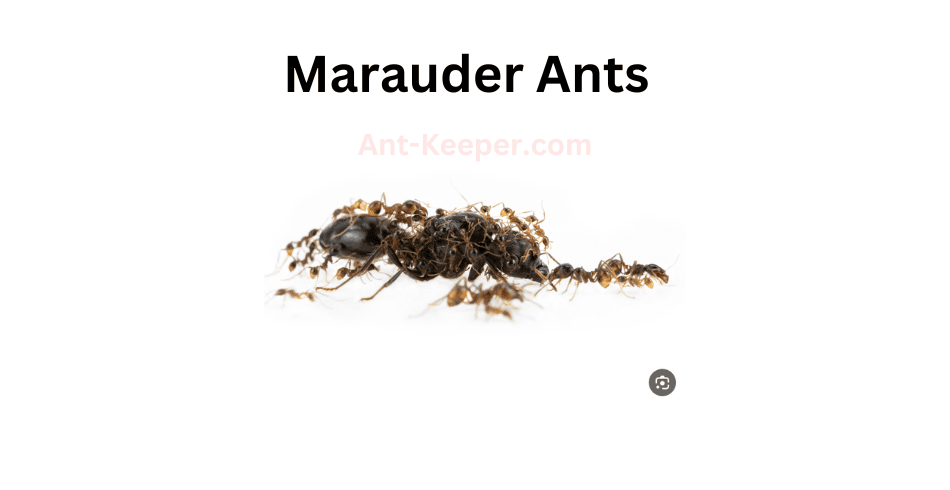
Marauder ants are a species of ants known for their aggressive behavior and large colony sizes.
They are typically found in tropical and subtropical regions, where they inhabit a variety of habitats including forests, grasslands, and urban areas.
These ants are known for their ability to raid other ant colonies and steal their resources, including food and brood.
They have powerful mandibles that allow them to overpower other ants and carry their prey back to their own colony.
Marauder ants are also known for their ability to adapt to changing environments.
They can quickly adjust their foraging patterns and nesting sites in response to changes in their surroundings, allowing them to thrive in a variety of habitats.
Despite their aggressive behavior, marauder ants play an important role in their ecosystems.
They help to control populations of other insects and contribute to nutrient cycling in the soil.
Overall, marauder ants are a fascinating species of ants that have adapted to thrive in a variety of environments.
Their aggressive behavior and large colony sizes make them a formidable force in the ant world.
14) Army Ants, Cerapachys
Army ants are a type of ant that belong to the subfamily Dorylinae.
They are known for their aggressive behavior and their ability to form large colonies that can contain up to several million individuals.
Army ants are found in tropical and subtropical regions around the world, and they play an important role in the ecosystems where they live.
One of the most distinctive features of army ants is their nomadic lifestyle.
Unlike other ants that build permanent nests, army ants are constantly on the move, searching for food and new nesting sites.
They are also known for their impressive hunting skills.
When they come across prey, they swarm over it in large numbers, overwhelming it with their sheer numbers and powerful jaws.
Army ants are also social insects, with a complex hierarchy that determines the roles of each individual in the colony.
The queen is the largest ant in the colony and is responsible for laying eggs.
The workers are responsible for foraging, caring for the young, and defending the colony.
The soldiers are larger and have stronger jaws, which they use to protect the colony from predators.
Despite their aggressive behavior, army ants are an important part of many ecosystems.
They help to control the populations of other insects and small animals, and they provide food for larger predators such as birds and mammals.
In some cultures, army ants are even used as a source of food for humans.
Overall, army ants are fascinating creatures that have adapted to life in some of the most challenging environments on Earth.
Their nomadic lifestyle, impressive hunting skills, and complex social structure make them one of the most interesting species of ants in the world.
15) Acrobat Ants, Crematogaster

Acrobat ants, also known as Crematogaster spp., are a genus of ants that are found in various parts of the world.
These ants are known for their unique ability to contort their bodies and move in acrobatic ways, hence their name.
Acrobat ants are relatively small, with workers measuring between 2-5mm in length.
They are typically brown or black in color, with a slender body and long legs.
These ants are known for their aggressive behavior and will readily defend their nests against intruders.
One of the most interesting features of acrobat ants is their ability to use their mandibles to grip onto surfaces and contort their bodies in unusual ways.
This allows them to move along narrow branches, twigs, and other surfaces that would be difficult for other ants to navigate.
They are also able to use this ability to escape from predators, such as birds and other insects.
Acrobat ants are omnivorous, meaning that they will eat both plant and animal matter.
They are known to feed on insects, nectar, and honeydew, as well as fruits and seeds.
These ants are also known to tend to aphids, protecting them from predators in exchange for the sweet honeydew that the aphids produce.
In terms of their social structure, acrobat ants are typically organized into colonies that are led by a queen.
The queen is responsible for laying eggs, while the workers are responsible for foraging, caring for the young, and defending the nest.
Overall, acrobat ants are fascinating creatures that have adapted unique abilities to survive in their environments.
Their acrobatic abilities and aggressive behavior make them a formidable force in the insect world.
16) Cryptic Ants, Cryptopone

Cryptic ants are a species of ants that are known for their ability to blend in with their surroundings.
They are typically small in size, measuring only a few millimeters in length, and have a dark brown or black coloration that helps them to remain inconspicuous.
One of the most interesting features of cryptic ants is their ability to mimic the appearance of other insects.
For example, some species of cryptic ants have been observed mimicking the appearance of spiders, which helps them to avoid detection by predators that might otherwise prey on them.
Cryptic ants are also known for their highly social behavior.
They live in large colonies that can contain thousands of individuals, and they work together to gather food, care for their young, and defend their territory from other ants and predators.
Despite their small size, cryptic ants play an important role in their ecosystem.
They help to aerate the soil, control pest populations, and provide food for other animals.
In addition, they are an important food source for many birds and other predators.
Overall, cryptic ants are a fascinating species of ants that have evolved a number of unique adaptations to help them survive in their environment.
Their ability to blend in with their surroundings and mimic other insects is just one example of the many ways in which they have adapted to their surroundings over time.
17) Discothyrea
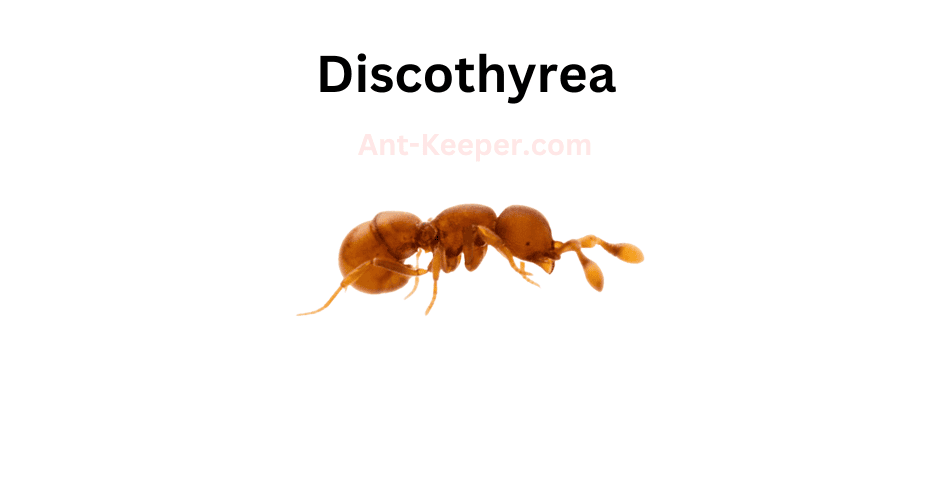
Discothyreabe is a species of ant that belongs to the Formicidae family.
These ants are known for their unique physical characteristics, including their elongated mandibles and slender bodies.
The workers of this species are typically around 3-4mm in length, while the queen can grow up to 7mm.
Discothyreabe ants are primarily found in forested areas, where they build their nests in soil or leaf litter.
They are known to be aggressive towards other ant species and will defend their territory fiercely.
These ants are also known to be nocturnal, which means they are most active during the night.
One of the most interesting aspects of Discothyreabe ants is their feeding habits.
They are known to be generalist feeders, which means they will eat a wide variety of foods.
They have been observed feeding on insects, nectar, and even carrion.
This adaptability allows them to thrive in a variety of environments.
Despite their small size, Discothyreabe ants play an important role in their ecosystem.
They help to control insect populations and contribute to soil health through their nest-building activities.
They are also an important food source for many other animals, including birds and small mammals.
Overall, Discothyreabe ants are a fascinating species that have adapted to thrive in a variety of environments.
Their unique physical characteristics and feeding habits make them an important part of their ecosystem.
18) Dolly Ants, Dolichoderus

Dolly Ants, also known as Dolichoderus spp., are a species of ant that belong to the family Formicidae.
These ants are known for their distinctive elongated heads and bodies, which give them a unique appearance compared to other ant species.
Dolly Ants are typically found in forested areas, where they build their nests in soil or under rocks.
They are known to be highly social insects, living in large colonies that can contain thousands of individuals.
Within these colonies, there is a strict division of labor, with different ants taking on specific roles such as foraging, caring for the young, and defending the colony.
One interesting aspect of Dolly Ant behavior is their use of chemical communication.
These ants use pheromones to communicate with each other, leaving trails of scent that other ants can follow to locate food sources or to find their way back to the nest.
They also use pheromones to signal danger, which can trigger a coordinated response from the colony to defend against predators.
Dolly Ants are omnivorous, feeding on a variety of foods including insects, nectar, and plant sap.
They are also known to have a mutualistic relationship with certain plant species, where they protect the plants from herbivores in exchange for a source of food.
Overall, Dolly Ants are a fascinating species of ant with unique physical and behavioral characteristics.
Their social structure and use of chemical communication make them an important subject of study for researchers interested in understanding the behavior of social insects.
19) Driver Ants, Dorylus

Driver ants, also known as army ants, are a group of highly social and nomadic ants belonging to the subfamily Dorylinae.
They are found in tropical regions around the world and are known for their aggressive behavior and large colony sizes.
Driver ants are typically black or brown in color and range in size from 2 to 15 millimeters in length.
They have powerful mandibles that they use to capture and kill prey, which can include insects, spiders, and even small vertebrates.
One of the most distinctive features of driver ants is their nomadic lifestyle.
Unlike many other ant species, driver ants do not build permanent nests.
Instead, they move their entire colony from place to place in search of food and suitable nesting sites.
This behavior is facilitated by the fact that driver ants have no fixed breeding season and can reproduce at any time of year.
Driver ants are also known for their highly organized social structure.
Each colony is led by a queen, who is responsible for laying eggs and producing new workers.
The workers are divided into different castes, with some specializing in foraging for food, while others are responsible for caring for the queen and her offspring.
Despite their aggressive behavior, driver ants play an important role in their ecosystem.
They help to control populations of other insects and can even help to aerate soil by digging tunnels as they move through the forest floor.
Overall, driver ants are a fascinating and important species that have adapted to thrive in some of the most challenging environments on Earth.
20) Echinopla
Echinoplabe is a species of ant that belongs to the Formicidae family.
These ants are known for their unique physical characteristics, including their spiny exoskeletons and elongated mandibles.
The workers of this species are typically around 4-5mm in length and are reddish-brown in color.
Echinoplabe ants are primarily found in forested areas and are known to be arboreal, meaning they live in trees.
They are also known to be aggressive and territorial, often engaging in battles with other ant species for resources and territory.
One interesting aspect of Echinoplabe ants is their diet.
They are known to feed on a variety of food sources, including insects, nectar, and even small vertebrates such as lizards and frogs.
This diverse diet allows them to thrive in a variety of environments and adapt to changing conditions.
Overall, Echinoplabe ants are a fascinating species with unique physical characteristics and behaviors.
Their ability to adapt to different environments and food sources makes them an important part of their ecosystem.
21) Epopostruma
Epopostrumabe is a species of ant that belongs to the Formicidae family.
These ants are known for their unique physical characteristics, including their elongated mandibles and slender bodies.
They are typically found in forested areas and are known to be active during the day.
Epopostrumabe ants are social insects that live in colonies.
The colonies are typically made up of a queen ant, worker ants, and male ants.
The queen ant is responsible for laying eggs, while the worker ants are responsible for foraging for food and caring for the young.
These ants are omnivorous and will eat a variety of foods, including insects, nectar, and seeds.
They are also known to have a symbiotic relationship with certain species of plants, where they will protect the plant from herbivores in exchange for food.
Epopostrumabe ants are important members of their ecosystem, as they help to control insect populations and aid in the dispersal of seeds.
They are also used in scientific research, as their unique physical characteristics make them an interesting subject for study.
Overall, Epopostrumabe ants are fascinating creatures that play an important role in their environment.
Their unique physical characteristics and social behavior make them a valuable addition to the world of ants.
22) Eurhopalothrix
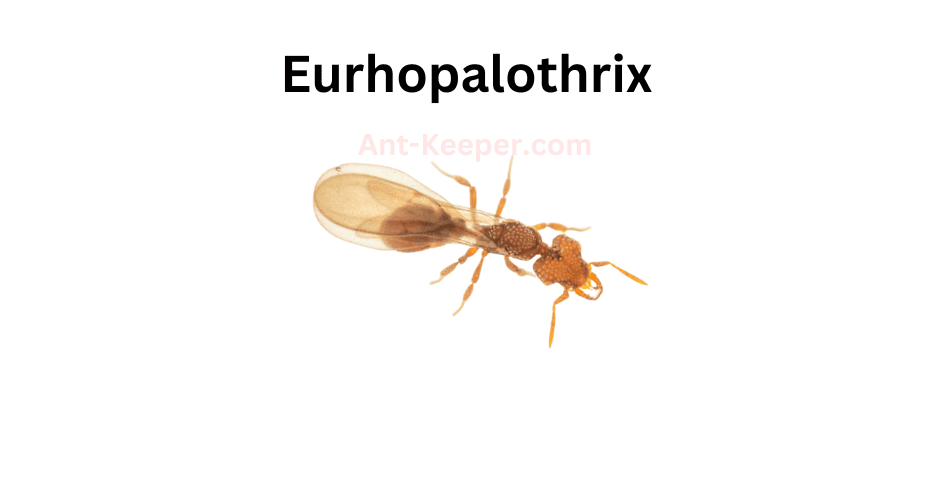
Eurhopalothrix is a genus of ants that belongs to the subfamily Myrmicinae.
The ants in this genus are small and have a distinctive appearance, with elongated bodies and long, thin legs.
They are known for their unique behavior of using their mandibles to hold onto the legs of their nestmates while they move around, which is thought to help them navigate through their complex nest structures.
Eurhopalothrix ants are found in a variety of habitats, including forests, grasslands, and deserts.
They are typically found in the soil or leaf litter, where they forage for food and build their nests.
These ants are omnivorous, feeding on a variety of small insects, fungi, and plant material.
One species of Eurhopalothrix that has been studied extensively is Eurhopalothrix heliscata.
This ant is known for its unique nest structure, which consists of a series of interconnected chambers and tunnels.
The ants in this species are also known for their aggressive behavior towards other ant species, and will often attack and kill intruders that enter their territory.
Overall, Eurhopalothrix ants are fascinating creatures that play an important role in their ecosystems.
Their unique behavior and nest structures make them a subject of interest for researchers studying ant behavior and ecology.
23) Gnamptogenys
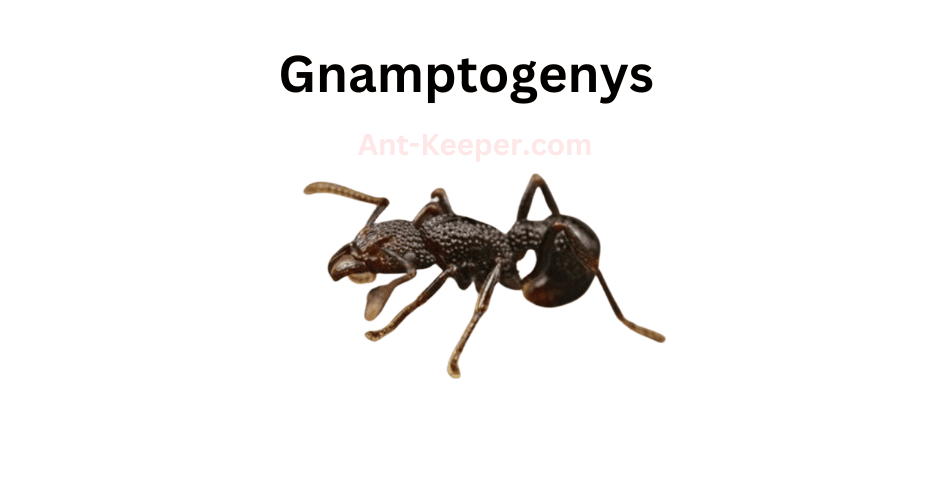
Gnamptogenys is a genus of ants that belongs to the subfamily Ectatomminae.
These ants are known for their predatory behavior and are commonly found in tropical regions.
The genus Gnamptogenys is characterized by their elongated mandibles, which are used to capture and subdue their prey.
Gnamptogenys ants are typically small in size, measuring between 2-5mm in length.
They have a dark brown or black coloration and a slender body shape.
These ants are known for their aggressive behavior and are often found hunting in groups.
One of the unique features of Gnamptogenys ants is their ability to use their mandibles to capture and subdue prey that is much larger than themselves.
They are also known to use their mandibles to defend their nests from predators.
Gnamptogenys ants are primarily found in forested areas, where they hunt for insects and other small invertebrates.
They are also known to scavenge for food, and will often feed on dead insects and other organic matter.
Overall, Gnamptogenys ants are fascinating creatures that play an important role in their ecosystem.
Their predatory behavior helps to control insect populations, while their scavenging behavior helps to recycle organic matter.
24) Heteroponera
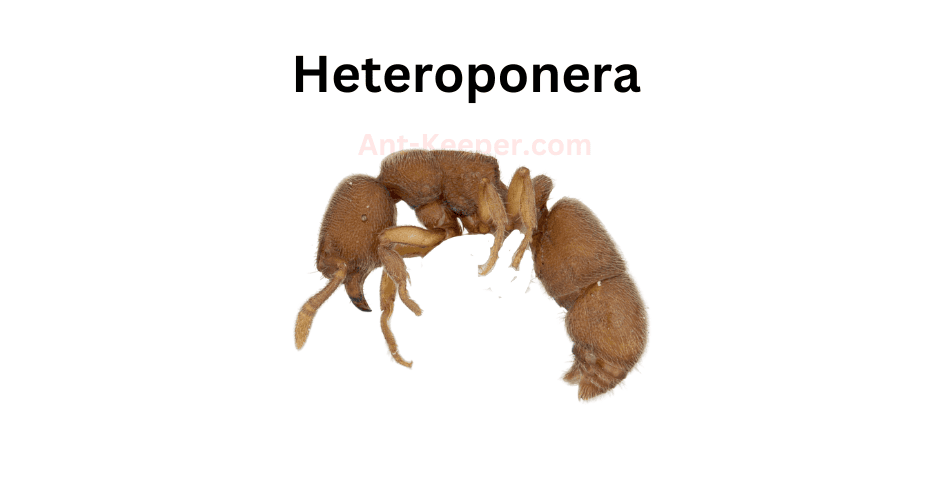
Heteroponerabe is a species of ant that belongs to the Heteroponera genus.
These ants are known for their aggressive behavior and are often found in forested areas.
They have a dark brown or black coloration and are relatively small in size, measuring around 5-7mm in length.
Heteroponerabe ants are solitary hunters and are known to be very efficient at capturing prey.
They have strong mandibles that they use to subdue their prey, which can include other insects, spiders, and even small vertebrates.
These ants are also known to scavenge for food, and will often feed on the carcasses of dead animals.
One interesting aspect of Heteroponerabe ants is their reproductive behavior.
Unlike many other ant species, Heteroponerabe queens do not mate with multiple males.
Instead, they mate with a single male and then store his sperm in a specialized organ called the spermatheca.
This allows the queen to fertilize her eggs over a long period of time, without the need for repeated mating.
Overall, Heteroponerabe ants are fascinating creatures that play an important role in their ecosystem.
While they may be aggressive and intimidating, they are also highly efficient hunters and scavengers that help to keep their environment in balance.
25) Crypt Ants, Hypoponera

Crypt ants, also known as fungus-growing ants, are a group of ants that cultivate fungi for food.
They are found in various habitats, including forests, grasslands, and deserts.
Crypt ants are known for their unique nesting behavior, as they construct underground chambers to house their fungal gardens.
These ants have a symbiotic relationship with the fungi they cultivate.
The ants provide the fungi with a suitable environment for growth, while the fungi provide the ants with a source of food.
The ants also protect their fungal gardens from other insects and parasites.
Crypt ants are social insects, living in colonies that can range from a few dozen to several thousand individuals.
The colonies are organized into castes, with the queen being the largest and most important member.
The queen is responsible for laying eggs, while the workers are responsible for tending to the fungal gardens and caring for the young.
One interesting aspect of crypt ants is their ability to create "satellite" nests.
These nests are smaller chambers located near the main nest, and they serve as storage areas for food and as a place for the queen to lay eggs.
The satellite nests are connected to the main nest by underground tunnels, allowing the ants to move between them.
Overall, crypt ants are fascinating insects that have developed a unique way of obtaining food.
Their symbiotic relationship with fungi and their complex nesting behavior make them an important species to study in the field of entomology.
26) Iridomyrmex
Iridomyrmex is a genus of ants that belongs to the family Formicidae.
These ants are commonly known as sugar ants or meat ants.
The species Iridomyrmex is a small, black ant that measures about 3-4 mm in length.
They have a slender body with a narrow waist and long legs.
The head of the ant is slightly elongated and has a pair of large compound eyes.
The antennae are also long and slender.
Iridomyrmex ants are known for their aggressive behavior and are often seen in large numbers.
They are omnivorous and feed on a variety of food sources, including nectar, honeydew, insects, and other small animals.
They are also known to scavenge on dead animals and carrion.
These ants are social insects and live in colonies that can range in size from a few hundred to several thousand individuals.
The colony is usually headed by a queen ant, who is responsible for laying eggs and reproducing.
The workers are responsible for foraging, caring for the young, and defending the colony.
Iridomyrmex ants are found in a variety of habitats, including forests, grasslands, and urban areas.
They are known to be particularly abundant in areas with high levels of human activity, such as parks and gardens.
Overall, Iridomyrmex ants are fascinating creatures that play an important role in their ecosystems.
While they may be a nuisance to humans at times, they are an essential part of the food chain and help to keep other insect populations in check.
27) Leptanilla
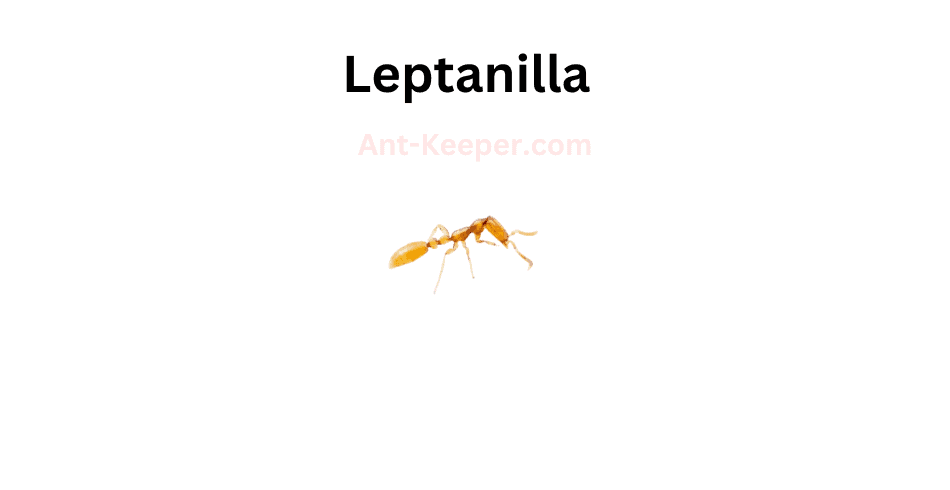
Leptanilla is a genus of ants that belongs to the subfamily Leptanillinae.
These ants are known for their small size and subterranean lifestyle.
They are typically found in tropical and subtropical regions, where they live in soil and leaf litter.
Leptanilla ants are unique in their morphology, with elongated bodies and long, slender legs.
They have small eyes and lack the ability to sting, relying instead on their powerful mandibles to defend themselves.
These ants are also known for their unusual behavior, with some species exhibiting a caste system where workers are divided into "major" and "minor" forms.
Despite their small size, Leptanilla ants play an important role in their ecosystems.
They are known to feed on small invertebrates and help to aerate soil through their burrowing activities.
Some species have also been observed engaging in mutualistic relationships with other insects, such as termites and beetles.
Due to their subterranean lifestyle, Leptanilla ants are not often encountered by humans.
However, they are of interest to researchers studying the evolution and behavior of social insects.
Their unique morphology and behavior make them a fascinating subject for scientific study.
28) Razorjaw Ants, Leptogenys

The Razorjaw Ant, also known as the Pachycondyla villosa, is a species of ant belonging to the subfamily Ponerinae.
These ants are known for their sharp mandibles, which are used for hunting and defense.
The workers of this species are typically around 8-10mm in length, while the queen can reach up to 15mm.
Razorjaw Ants are found in a variety of habitats, including forests, grasslands, and deserts.
They are known to be aggressive predators, feeding on a variety of insects and other arthropods.
These ants are also known to scavenge for food, and will even attack and kill other ant species to steal their food.
The nests of Razorjaw Ants are typically found in soil or leaf litter, and can be quite large.
The queen is responsible for laying eggs, and the workers are responsible for caring for the brood and maintaining the nest.
These ants are also known for their ability to defend their nest, and will aggressively attack any intruders.
Overall, the Razorjaw Ant is a fascinating species of ant known for its sharp mandibles, aggressive behavior, and impressive hunting skills.
29) Leptomyrmex
Leptomyrmex is a genus of ants belonging to the subfamily Dolichoderinae.
These ants are commonly known as spider ants due to their long and slender legs that resemble those of spiders.
The genus is distributed throughout various regions of the world, including tropical and subtropical areas.
Leptomyrmex ants are known for their aggressive behavior and are often found in large colonies.
They are also known for their unique hunting strategy, where they use their long legs to capture prey.
These ants are primarily carnivorous and feed on other insects, spiders, and small invertebrates.
The workers of Leptomyrmex ants are polymorphic, meaning they come in different sizes and perform different tasks within the colony.
The larger workers are responsible for foraging and defending the colony, while the smaller workers take care of the brood and tend to the queen.
The reproductive members of the colony are winged males and females.
These ants mate during a nuptial flight, after which the males die, and the females establish new colonies.
Leptomyrmex ants are important members of their ecosystems, as they help control the populations of other insects and contribute to nutrient cycling in the soil.
However, some species of Leptomyrmex ants are considered pests, as they can cause damage to crops and invade human dwellings.
Overall, Leptomyrmex ants are fascinating creatures with unique adaptations and behaviors that make them an important part of the natural world.
30) Liomyrmex
Liomyrmex is a genus of ants that belongs to the subfamily Dolichoderinae.
The ants in this genus are known for their unique morphology, which includes a long and slender body, elongated mandibles, and a distinctive head shape.
The genus is relatively small, with only a few known species.
Liomyrmex ants are typically found in forested areas, where they nest in soil or leaf litter.
They are known to be aggressive predators, feeding on a variety of insects and other arthropods.
The ants are also known to have a symbiotic relationship with certain plant species, where they protect the plants from herbivores in exchange for food and shelter.
One of the most interesting aspects of Liomyrmex ants is their social behavior.
Like many other ant species, Liomyrmex ants live in colonies that are organized into a strict hierarchy.
The queen ant is responsible for laying eggs, while the worker ants are responsible for foraging, caring for the young, and defending the colony.
Overall, Liomyrmex ants are fascinating creatures that play an important role in their ecosystems.
Their unique morphology, predatory behavior, and social organization make them a subject of interest for scientists and nature enthusiasts alike.
31) Lordomyrma
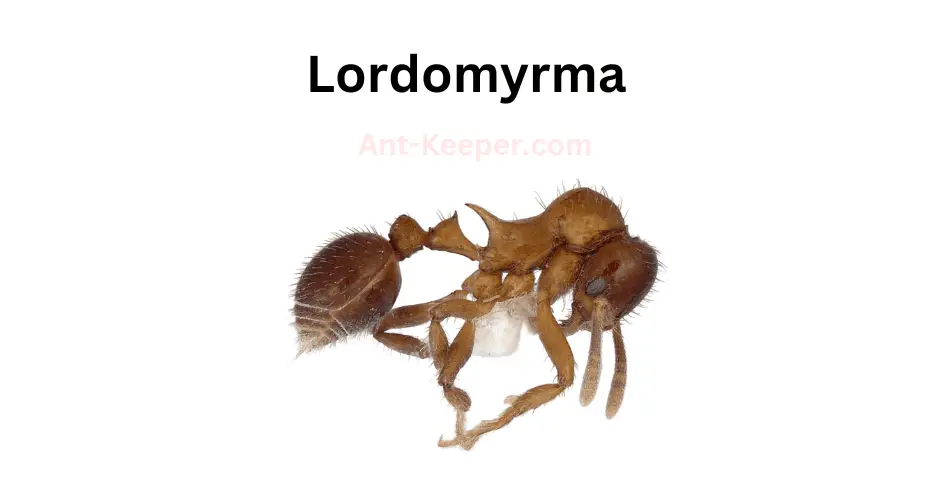
Lordomyrmabe is a genus of ants belonging to the family Formicidae.
These ants are known for their unique physical characteristics and behavior.
They are small in size, measuring between 2-3 mm in length, and have a distinctively elongated head and mandibles.
The workers of this genus are polymorphic, meaning they come in different sizes and shapes.
Lordomyrmabe ants are known to be arboreal, meaning they live in trees and other elevated structures.
They are also known to be aggressive and territorial, often engaging in battles with other ant species for resources and territory.
These ants are omnivorous, feeding on a variety of food sources including insects, nectar, and honeydew.
One of the most interesting aspects of Lordomyrmabe ants is their reproductive behavior.
The queen ant is known to mate with multiple males, resulting in a genetically diverse colony.
The queen is also capable of reproducing asexually, producing clones of herself.
Overall, Lordomyrmabe ants are fascinating creatures with unique physical and behavioral characteristics.
Their arboreal lifestyle, aggressive behavior, and reproductive strategies make them a fascinating subject for scientific study.
32) Loweriella
Loweriellabe is a species of ant that belongs to the Formicidae family.
These ants are small in size, measuring only a few millimeters in length.
They are typically found in forested areas and are known to be arboreal, meaning they live in trees.
Loweriellabe ants are known for their unique physical characteristics.
They have a distinctively shaped head that is wider than their thorax, and their antennae are long and slender.
Their bodies are covered in fine hairs, giving them a fuzzy appearance.
These ants are social insects and live in colonies that can range in size from a few dozen to several hundred individuals.
The colony is typically led by a queen ant, who is responsible for laying eggs and maintaining the colony's population.
Loweriellabe ants are omnivorous, meaning they eat both plant and animal matter.
They are known to feed on insects, nectar, and honeydew produced by other insects.
They are also known to cultivate fungi, which they use as a food source.
Despite their small size, Loweriellabe ants play an important role in their ecosystem.
They help to control the populations of other insects and contribute to the decomposition of organic matter.
They are also an important food source for many other animals, including birds and small mammals.
Overall, Loweriellabe ants are fascinating creatures that are an important part of the natural world.
Their unique physical characteristics and social behavior make them a fascinating subject for study and observation.
33) Mayriella
Mayriellabe is a species of ant that belongs to the Formicidae family.
These ants are known for their unique physical characteristics and behavior.
They have a dark brown or black coloration and are relatively small in size, measuring around 2-3 millimeters in length.
One of the most distinctive features of Mayriellabe ants is their elongated mandibles, which are used for a variety of tasks such as digging, carrying food, and defending their colony.
They are also known for their aggressive behavior towards other ant species and will often engage in territorial disputes.
Mayriellabe ants are typically found in forested areas and are known to build their nests in soil or leaf litter.
They are omnivorous and will feed on a variety of food sources including insects, nectar, and plant sap.
Despite their small size, Mayriellabe ants play an important role in their ecosystem.
They help to aerate the soil, control insect populations, and provide food for other animals such as birds and reptiles.
Overall, Mayriellabe ants are a fascinating species that continue to intrigue scientists and nature enthusiasts alike.
34) Shield Ants, Meranoplus
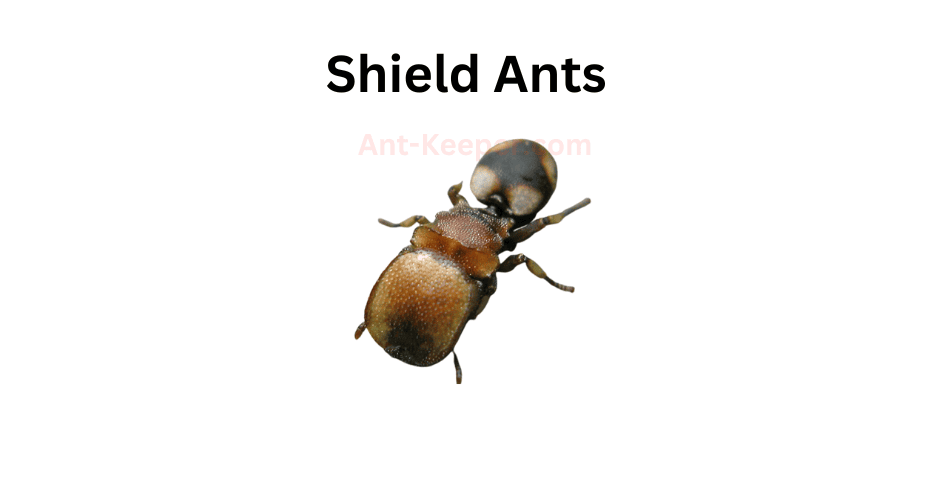
Shield ants, also known as turtle ants, are a species of ant that belong to the genus Cephalotes.
They are found in tropical regions and are known for their unique physical characteristics.
One of the most distinctive features of shield ants is their flattened, disc-shaped head.
This head shape allows them to block the entrance to their nests, protecting them from predators and other threats.
In addition, shield ants have long, spindly legs that allow them to move quickly and easily through the forest canopy.
Shield ants are social insects and live in large colonies.
They are known for their complex communication systems, which involve chemical signals and physical gestures.
They also have a division of labor within their colonies, with different ants taking on different roles such as foraging, nest building, and caring for the young.
One interesting behavior of shield ants is their use of "backpacks." Some worker ants will carry small pieces of leaves or other materials on their backs as they move through the forest.
It is believed that these backpacks may serve as camouflage or protection from predators.
Overall, shield ants are a fascinating species of ant with unique physical and behavioral adaptations that allow them to thrive in their tropical habitats.
35) Metapone
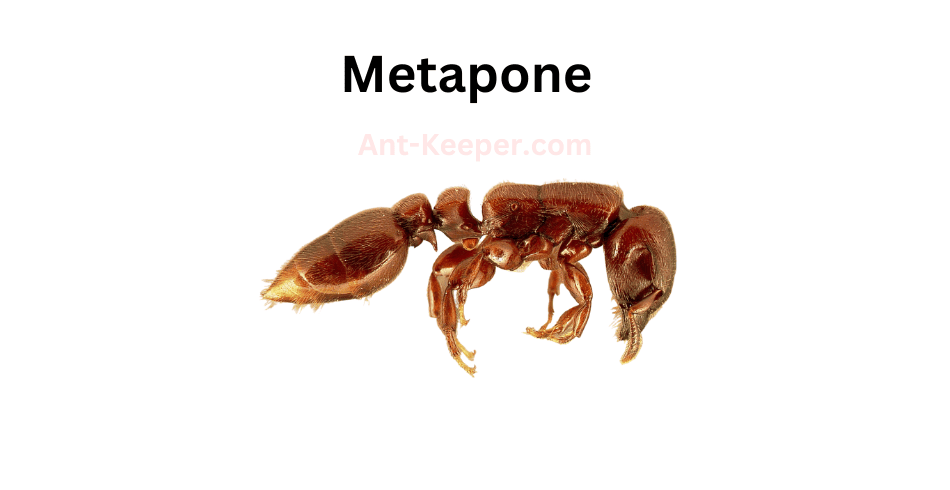
Metaponebe is a species of ant that belongs to the subfamily Ponerinae.
These ants are known for their small size, with workers measuring only a few millimeters in length.
They are typically found in forested areas, where they live in small colonies consisting of a queen and a few dozen workers.
One of the most interesting features of Metaponebe ants is their unique mandibles.
Unlike most ants, which have sharp, pointed mandibles for biting and cutting, Metaponebe ants have flattened, spoon-shaped mandibles that are used for scooping up small prey.
This adaptation allows them to feed on a variety of insects and other small invertebrates that other ants might not be able to catch.
Metaponebe ants are also known for their aggressive behavior.
They will defend their nests fiercely against intruders, and will even attack much larger animals if they feel threatened.
Despite their small size, these ants are not to be underestimated.
Overall, Metaponebe ants are fascinating creatures that have adapted to their environment in unique ways.
Their small size and specialized mandibles make them well-suited for life in the forest, and their aggressive behavior ensures that they are able to protect their colonies from harm.
36) Trailing Pharaoh And Timid Ants, Monomorium

The Trailing Pharaoh ant, also known as the Monomorium pharaonis, is a small, reddish-brown ant species that is commonly found in urban areas.
These ants are known for their ability to form large colonies, which can consist of thousands of individuals.
One interesting behavior of the Trailing Pharaoh ant is their tendency to trail behind other ants.
This behavior is thought to be a form of communication, as the trailing ants are able to follow the scent trail left by the leading ants.
This behavior is also used to locate food sources, as the trailing ants are able to follow the trail to the source of the food.
In contrast to the bold behavior of the Trailing Pharaoh ant, the Timid ant, also known as the Temnothorax species, is a much more cautious species.
These ants are small and brown, and are often found in wooded areas.
They are known for their timid behavior, and will often retreat into their nests when threatened.
Despite their timid nature, the Timid ant is still able to form large colonies.
They are also known for their ability to adapt to changing environments, and can be found in a variety of habitats, including forests, meadows, and even urban areas.
Overall, both the Trailing Pharaoh ant and the Timid ant are fascinating species that demonstrate unique behaviors and adaptations.
By studying these ants, scientists can gain a better understanding of the complex social behaviors and ecological roles of ants in their respective environments.
37) Myopias
Myopiasbe is a species of ant that belongs to the Formicidae family.
These ants are known for their small size, measuring only a few millimeters in length.
They have a dark brown or black coloration and a slender body shape.
Myopiasbe ants are typically found in forested areas, where they build their nests in soil or leaf litter.
These ants are known to be omnivorous, feeding on a variety of food sources including insects, nectar, and plant sap.
They are also known to be aggressive towards other ant species, often engaging in territorial disputes.
Myopiasbe ants have a unique reproductive system, with queens producing both male and female offspring.
The males are typically smaller than the females and have wings, while the females are wingless and larger in size.
These ants play an important role in their ecosystem, serving as prey for larger animals and helping to control insect populations.
They also contribute to soil health by aerating the soil and distributing nutrients.
Overall, Myopiasbe ants are a fascinating species with unique characteristics and important ecological roles.
38) Myrmecia
Myrmecia is a genus of ants that belongs to the family Formicidae.
These ants are commonly known as bull ants or jack-jumpers due to their aggressive nature and ability to jump.
Myrmecia ants are found in various habitats, including forests, woodlands, and grasslands.
The Myrmecia ant is a large and robust insect, with workers ranging from 8 to 40 millimeters in length.
They have a distinctive appearance, with long mandibles and a powerful sting.
The coloration of Myrmecia ants varies depending on the species, but they are typically black, red, or brown.
Myrmecia ants are known for their aggressive behavior and are considered one of the most dangerous ant species in the world.
They are highly territorial and will attack anything that enters their territory, including humans.
Their powerful mandibles and venomous sting make them a formidable opponent.
Despite their aggressive nature, Myrmecia ants play an important role in their ecosystem.
They are predators, feeding on other insects and small animals.
They also help to aerate the soil and distribute seeds, contributing to the growth and health of their environment.
In conclusion, the Myrmecia ant is a fascinating and formidable insect.
Their aggressive behavior and powerful sting make them a force to be reckoned with, but they also play an important role in their ecosystem.
39) Nesomyrmex
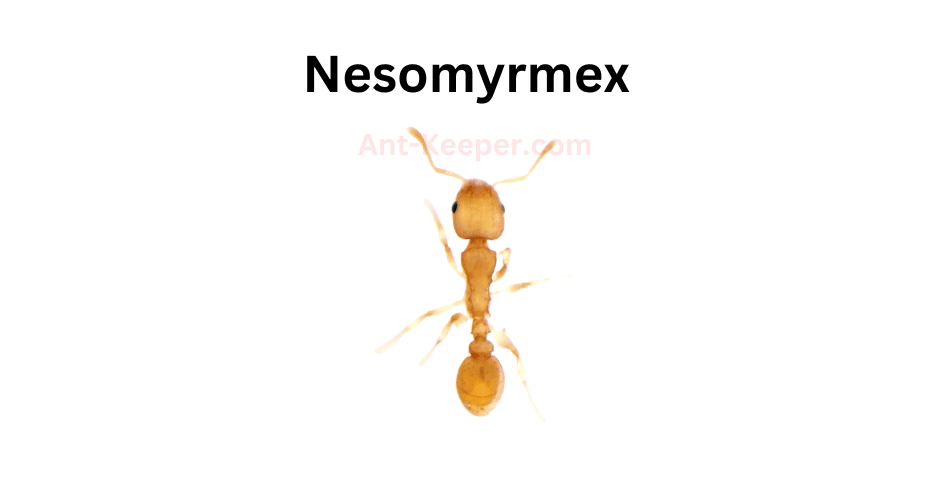
Nesomyrmex is a genus of ants that belongs to the subfamily Myrmicinae.
These ants are small in size, measuring between 2-5 mm in length.
They are known for their distinctive appearance, with a slender body and elongated mandibles.
The coloration of Nesomyrmex ants varies between species, with some being black, while others are reddish-brown or yellowish-brown.
Nesomyrmex ants are primarily found in tropical and subtropical regions, where they inhabit a variety of habitats, including forests, grasslands, and deserts.
They are known to be highly adaptable and can thrive in both wet and dry environments.
These ants are social insects and live in colonies that can range in size from a few dozen to several hundred individuals.
The colony is typically led by a queen, who is responsible for laying eggs and maintaining the colony's reproductive population.
The workers, which are sterile females, are responsible for foraging for food, caring for the young, and defending the colony.
Nesomyrmex ants are known to be aggressive and will defend their colony fiercely against intruders.
They are also known to be opportunistic feeders, consuming a wide variety of food sources, including insects, seeds, and nectar.
Overall, Nesomyrmex ants are fascinating insects that play an important role in their ecosystems.
Their adaptability and resilience make them a valuable subject of study for scientists and researchers.
40) Notostigma
Notostigma is a genus of ants that belongs to the subfamily Myrmicinae.
These ants are small in size, measuring only a few millimeters in length.
They are known for their distinctive appearance, which includes a unique shape of the petiole (the narrow waist between the thorax and abdomen) and the presence of a small spine on the back of the thorax.
Notostigma ants are typically found in forested areas, where they live in small colonies.
They are known to be aggressive towards other ant species and will defend their territory fiercely.
These ants are also known to be omnivorous, feeding on a variety of food sources including insects, nectar, and plant sap.
One interesting behavior of Notostigma ants is their ability to form "rafts" when their colony is threatened by flooding.
The ants will link together and form a floating mass that can survive for several days until the water recedes.
Overall, Notostigma ants are a fascinating species with unique physical characteristics and interesting behaviors.
While they may not be well-known outside of the scientific community, they play an important role in their ecosystem and are a valuable subject of study for researchers.
41) Crazy Ants, Nylanderia

Crazy ants, also known as Nylanderia fulva, are a species of ant that belong to the family Formicidae.
They are small in size, measuring only about 2.2 to 3 mm in length, and are reddish-brown in color.
These ants are known for their erratic and unpredictable behavior, hence the name "crazy ants."
Crazy ants are native to South America, but have since spread to other parts of the world, including North America, Asia, and Australia.
They are highly adaptable and can thrive in a variety of environments, including urban areas, forests, and grasslands.
One of the most notable characteristics of crazy ants is their ability to form large colonies with multiple queens.
This allows them to quickly establish themselves in new areas and outcompete other ant species.
Crazy ants are also known for their aggressive behavior towards other insects and animals, including humans.
In addition to their aggressive behavior, crazy ants are also known for their ability to cause damage to electrical equipment.
They are attracted to electrical currents and can easily short-circuit electronics, causing damage and potentially starting fires.
Despite their small size, crazy ants are a formidable species that can have a significant impact on their environment.
As they continue to spread to new areas, it is important to monitor their behavior and take steps to control their populations in order to minimize their impact on ecosystems and human infrastructure.
42) Ochetellus

Ochetellus is a genus of ants that belongs to the subfamily Dolichoderinae.
These ants are small in size, measuring between 2-5 mm in length.
They are known for their distinctive appearance, with a slender and elongated body that is covered in fine hairs.
The head of Ochetellus ants is also elongated, with large mandibles that are used for hunting and defense.
Ochetellus ants are social insects that live in colonies.
The colonies are typically small, with only a few hundred individuals.
The queen is the largest member of the colony and is responsible for laying eggs.
The workers, which are all female, are responsible for foraging, caring for the young, and defending the colony.
Ochetellus ants are omnivorous, meaning they eat both plant and animal matter.
They are known to feed on insects, nectar, and honeydew.
They are also known to tend to aphids, which produce honeydew that the ants feed on.
Ochetellus ants are found in a variety of habitats, including forests, grasslands, and deserts.
They are known to be particularly abundant in areas with sandy soils.
These ants are important members of their ecosystems, playing a role in seed dispersal and soil health.
Overall, Ochetellus ants are fascinating insects that are well adapted to their environments.
Their unique appearance and behavior make them a popular subject of study for entomologists and nature enthusiasts alike.
43) Trap-Jaw Ants, Odontomachus

Trap-jaw ants are a species of ants that belong to the genus Odontomachus.
These ants are known for their unique and powerful mandibles, which they use to capture prey and defend their colonies.
The mandibles of trap-jaw ants are capable of closing at incredible speeds, reaching up to 140 miles per hour.
This allows them to snap their jaws shut with incredible force, which can stun or kill their prey.
Trap-jaw ants are found in a variety of habitats, including forests, grasslands, and deserts.
They are typically active during the day and are known to be highly territorial.
These ants are also known for their ability to jump, which they use to escape danger or to capture prey.
Trap-jaw ants are omnivorous, meaning that they eat both plant and animal matter.
They are known to feed on a variety of insects, including other ants, as well as nectar and other sweet substances.
These ants are also known to be scavengers, feeding on dead insects and other organic matter.
The colonies of trap-jaw ants are typically small, with only a few hundred individuals.
However, they are highly organized and have a strict social hierarchy.
The queen is the largest member of the colony and is responsible for laying eggs.
The workers, which are all female, are responsible for foraging, caring for the young, and defending the colony.
Overall, trap-jaw ants are fascinating creatures that have evolved unique adaptations to help them survive in their environments.
Their powerful mandibles and jumping abilities make them formidable predators, while their social organization allows them to work together to protect their colonies and ensure their survival.
44) Orectognathus
Orectognathus is a genus of ants belonging to the family Formicidae.
The ants in this genus are known for their elongated mandibles, which are used for capturing prey and defending their colonies.
Orectognathus ants are typically found in forested areas and are known to be active foragers, often hunting for insects and other small invertebrates.
The workers of Orectognathus ants are typically small in size, measuring between 2-5mm in length.
They are typically reddish-brown in color and have a distinctively elongated head and mandibles.
The queen ants are larger in size, measuring up to 10mm in length, and are responsible for laying eggs and maintaining the colony.
Orectognathus ants are known to be highly territorial and will aggressively defend their colonies against intruders.
They are also known to be highly adaptable and can thrive in a variety of different environments, including both tropical and temperate regions.
Despite their small size, Orectognathus ants play an important role in their ecosystems.
They are known to be important predators of other insects and can help to control populations of pests in their habitats.
Additionally, they are an important food source for many other animals, including birds and small mammals.
Overall, Orectognathus ants are fascinating creatures that play an important role in their ecosystems.
Their unique physical characteristics and behaviors make them a fascinating subject of study for scientists and nature enthusiasts alike.
45) Paraparatrechina
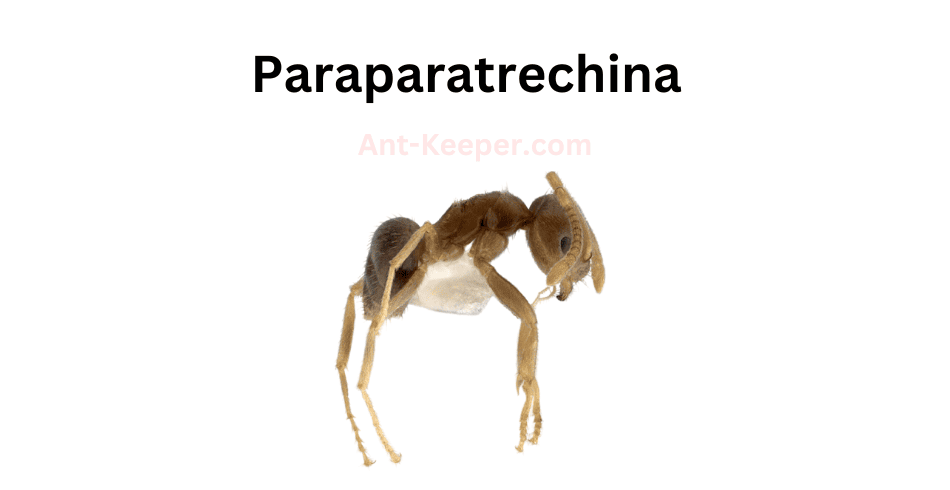
Paraparatrechinabe is a species of ant that belongs to the family Formicidae.
These ants are known for their small size, typically measuring between 1.5 and 2.5 millimeters in length.
They are typically reddish-brown in color and have a slender body shape.
Paraparatrechinabe ants are commonly found in a variety of habitats, including forests, grasslands, and urban areas.
They are known for their aggressive behavior and will defend their nests fiercely against intruders.
These ants are omnivorous, meaning they will eat both plant and animal matter.
They are known to feed on a variety of foods, including nectar, honeydew, and small insects.
Paraparatrechinabe ants are social insects and live in colonies that can range in size from a few dozen to several thousand individuals.
The colony is typically led by a queen ant, who is responsible for laying eggs and maintaining the overall health of the colony.
Overall, Paraparatrechinabe ants are an important part of many ecosystems and play a vital role in maintaining the balance of nature.
Despite their small size, they are a formidable force in the world of insects and are a fascinating species to study and observe.
46) Paratopula
Paratopulabe is a species of ant that belongs to the Formicidae family.
These ants are known for their unique physical characteristics and behavior.
They have a dark brown or black coloration and are relatively small in size, measuring around 3-4 millimeters in length.
One of the most distinctive features of Paratopulabe ants is their elongated mandibles.
These mandibles are used for a variety of purposes, including hunting, defense, and communication.
The ants also have a pair of large compound eyes that allow them to see in low light conditions.
Paratopulabe ants are social insects that live in colonies.
The colonies are typically made up of a queen, workers, and soldiers.
The queen is responsible for laying eggs, while the workers and soldiers take care of the colony and protect it from predators.
These ants are omnivorous, meaning that they eat both plant and animal matter.
They are known to feed on insects, fruits, and nectar.
Paratopulabe ants are also important in seed dispersal, as they help to spread the seeds of plants throughout their habitat.
Overall, Paratopulabe ants are fascinating creatures that play an important role in their ecosystem.
Their unique physical characteristics and behavior make them a subject of interest for scientists and nature enthusiasts alike.
47) Crazy Ants, Paratrechina

Crazy ants, also known as Nylanderia fulva, are a species of ant that belong to the family Formicidae.
They are small in size, measuring only about 2.2 to 3 mm in length, and are reddish-brown in color.
These ants are known for their erratic and unpredictable behavior, hence the name "crazy ants."
Crazy ants are native to South America, but have since spread to other parts of the world, including North America, Asia, and Australia.
They are highly adaptable and can thrive in a variety of environments, including urban areas, forests, and grasslands.
One of the most notable characteristics of crazy ants is their ability to form large colonies with multiple queens.
This allows them to quickly establish themselves in new areas and outcompete other ant species.
Crazy ants are also known for their aggressive behavior towards other insects and animals, including humans.
In addition to their aggressive behavior, crazy ants are also known for their ability to cause damage to electrical equipment.
They are attracted to electrical currents and can easily short-circuit electronics, causing damage and potentially starting fires.
Despite their small size, crazy ants are a formidable species that can have a significant impact on their environment.
As they continue to spread to new areas, it is important to monitor their behavior and take steps to control their populations in order to minimize their impact on ecosystems and human infrastructure.
48) Big Headed Ants, Pheidole

Big Headed Ants, also known as Pheidole megacephala, are a species of ant that belong to the family Formicidae.
These ants are known for their distinctive large heads, which are used for defense and communication within their colonies.
Big Headed Ants are typically found in tropical and subtropical regions, where they build their nests in soil, leaf litter, and other organic matter.
They are omnivorous, feeding on a variety of insects, seeds, and other small organisms.
One of the most interesting aspects of Big Headed Ants is their social behavior.
They live in large colonies, with a queen ant at the center of the hierarchy.
The queen is responsible for laying eggs, while the other ants in the colony perform various tasks such as foraging for food, caring for the young, and defending the colony from predators.
Big Headed Ants are also known for their ability to displace other ant species in their habitats.
They are aggressive and have been known to attack and kill other ants, as well as compete with them for resources.
Despite their aggressive behavior, Big Headed Ants are not considered a major pest species.
However, their ability to displace other ant species and their potential impact on native ecosystems make them an important species to study and monitor.
49) Pheidologeton
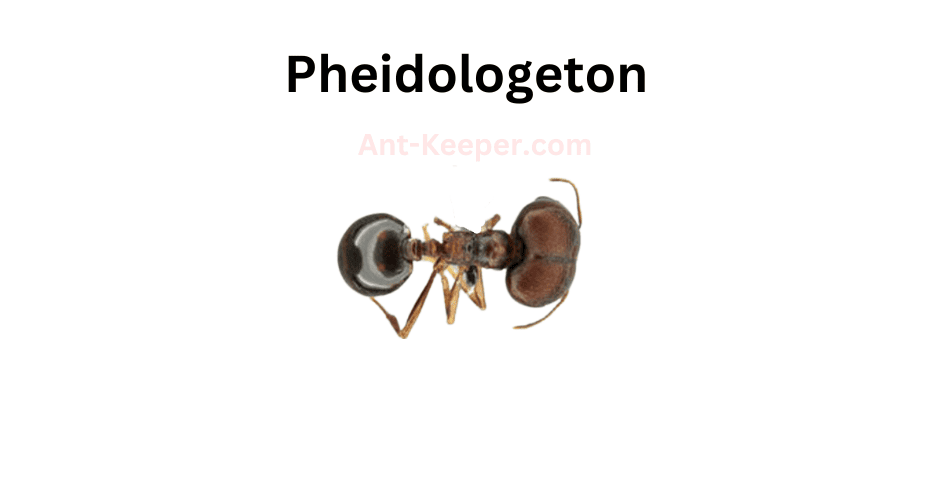
Pheidologeton is a genus of ants belonging to the family Formicidae.
These ants are commonly known as weaver ants due to their unique ability to construct nests by weaving leaves together using silk produced by their larvae.
Pheidologeton ants are found in tropical regions and are known for their aggressive behavior and large colony sizes.
The workers of Pheidologeton ants are polymorphic, meaning they come in different sizes and perform different tasks within the colony.
The smaller workers are responsible for foraging and caring for the brood, while the larger workers defend the colony and construct the nests.
Pheidologeton ants are also known for their ability to form supercolonies, where multiple nests are connected and function as a single unit.
Pheidologeton ants are omnivorous, feeding on a variety of insects, nectar, and other plant materials.
They are also known to engage in mutualistic relationships with other insects, such as scale insects and aphids, which provide them with honeydew in exchange for protection.
Overall, Pheidologeton ants are fascinating creatures with unique behaviors and adaptations that allow them to thrive in their tropical habitats.
50) Philidris
Philidrisbe is a species of ant that belongs to the family Formicidae.
These ants are known for their small size and unique physical characteristics.
They have a dark brown or black coloration and are typically less than 2 millimeters in length.
One of the most distinctive features of Philidrisbe ants is their elongated mandibles.
These mandibles are used for a variety of tasks, including capturing prey and defending the colony.
Despite their small size, these ants are known for their aggressive behavior and will not hesitate to attack intruders.
Philidrisbe ants are typically found in forested areas, where they build their nests in soil or leaf litter.
They are known for their ability to form large colonies, which can contain thousands of individuals.
These colonies are highly organized, with each ant having a specific role to play in the colony's survival.
One of the most interesting aspects of Philidrisbe ants is their relationship with other insects.
These ants are known to form symbiotic relationships with aphids, which provide them with a source of honeydew.
In exchange, the ants protect the aphids from predators and parasites.
Overall, Philidrisbe ants are a fascinating species that play an important role in their ecosystem.
Their unique physical characteristics and behavior make them a subject of interest for scientists and nature enthusiasts alike.
51) Restless Ants, Plagiolepis
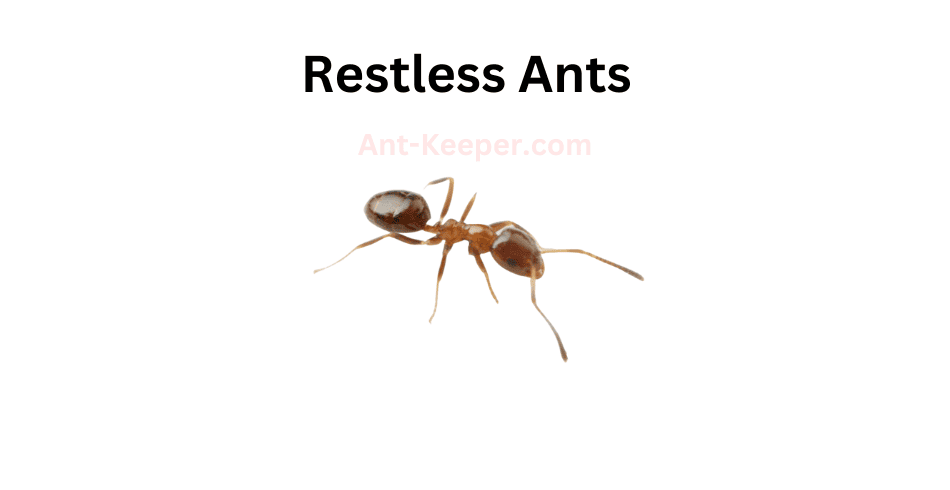
Restless Ants, also known as the Red Ants, are a species of ants that belong to the Formicidae family.
They are known for their highly active and restless behavior, constantly moving around in search of food and resources.
These ants are typically small in size, measuring around 2-3 mm in length.
They have a reddish-brown coloration and a slender body shape, with long legs and antennae.
Restless Ants are social insects, living in large colonies that can contain thousands of individuals.
Restless Ants are omnivorous, feeding on a variety of food sources including insects, fruits, and seeds.
They are also known to scavenge for food, often raiding the nests of other ant species to steal their resources.
One of the most interesting aspects of Restless Ants is their ability to adapt to changing environments.
They are able to quickly adjust their behavior and foraging patterns in response to changes in their surroundings, such as changes in temperature or the availability of food.
Restless Ants are also known for their aggressive behavior, particularly when defending their nests or resources.
They have powerful mandibles that they use to bite and defend themselves against predators or other ants.
Overall, Restless Ants are fascinating creatures that play an important role in their ecosystem.
Their highly active and adaptable behavior makes them a valuable species to study and understand.
52) Platythyrea

Platythyreabe is a species of ant that belongs to the family Formicidae.
These ants are known for their unique physical characteristics, including their flattened bodies and elongated mandibles.
Platythyreabe ants are typically found in forested areas and are known to be active foragers, often hunting for small insects and other invertebrates.
One of the most interesting aspects of Platythyreabe ants is their social behavior.
These ants live in colonies that are typically composed of several hundred individuals.
Within these colonies, there is a strict hierarchy, with a single queen ant at the top.
The queen is responsible for laying eggs, while the other ants in the colony are responsible for caring for the young and maintaining the nest.
Platythyreabe ants are also known for their aggressive behavior.
When threatened, these ants will use their elongated mandibles to defend themselves and their colony.
They are also known to release a chemical signal that alerts other ants in the colony to the presence of a threat.
Despite their aggressive behavior, Platythyreabe ants play an important role in their ecosystem.
They help to control populations of small insects and other invertebrates, and they also serve as a food source for larger predators.
Overall, Platythyreabe ants are fascinating creatures that offer a unique glimpse into the complex world of social insects.
53) Podomyrma
Podomyrmabe is a species of ant that belongs to the Formicidae family.
These ants are known for their small size, typically measuring between 2-3mm in length.
They have a distinctive appearance, with a dark brown or black body and long, slender legs.
Podomyrmabe ants are typically found in forested areas, where they live in small colonies.
They are known for their aggressive behavior, and will defend their territory fiercely against other ant species.
Despite their small size, they are capable of inflicting painful bites on humans and other animals.
These ants are omnivorous, feeding on a variety of food sources including insects, fruits, and plant sap.
They are also known to tend to aphids, which produce a sugary substance that the ants feed on.
Podomyrmabe ants are important members of their ecosystem, playing a key role in the food chain.
They are preyed upon by a variety of animals, including birds, reptiles, and other insects.
In turn, they help to control populations of other insects, and their activities help to aerate and fertilize the soil.
Overall, Podomyrmabe ants are fascinating creatures that play an important role in the natural world.
While they may be small and often overlooked, they are a vital part of the ecosystem and deserve our respect and admiration.
54) Spiny Ants, Polyrhachis
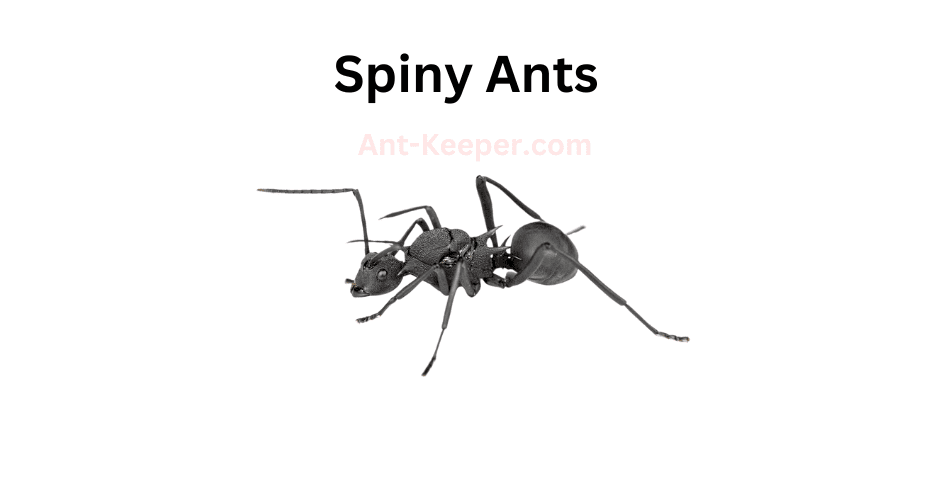
Spiny ants, also known as Polyrhachis sp., are a species of ants that belong to the family Formicidae.
These ants are known for their unique appearance, with spines covering their bodies that serve as a form of protection against predators.
Spiny ants are typically black or dark brown in color and range in size from 4 to 10 millimeters in length.
They are found in a variety of habitats, including forests, grasslands, and urban areas.
These ants are known for their aggressive behavior and will defend their nests fiercely.
Spiny ants are omnivores, feeding on a variety of food sources including insects, nectar, and honeydew.
They are also known to tend to aphids, protecting them from predators in exchange for the sweet honeydew they produce.
These ants are social insects, living in colonies that can range in size from a few dozen to several thousand individuals.
The colony is typically led by a queen ant, who is responsible for laying eggs and maintaining the colony's population.
Spiny ants play an important role in their ecosystems, serving as both predators and prey.
They help to control the populations of other insects and provide food for larger animals such as birds and reptiles.
Overall, spiny ants are a fascinating species of ants that are known for their unique appearance and aggressive behavior.
They play an important role in their ecosystems and are an important part of the natural world.
55) Porthole Ants, Ponera
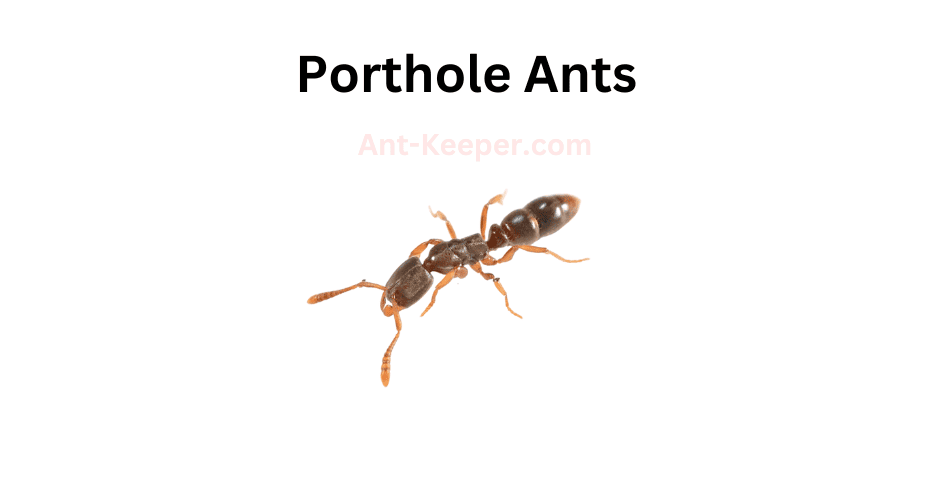
Porthole ants, also known as Temnothorax spp., are a genus of small ants that are commonly found in forested areas.
These ants are known for their unique nesting behavior, as they create their nests in small cavities or "portholes" in trees, rocks, or other natural structures.
Porthole ants are typically less than 5mm in length and have a dark brown or black coloration.
They are social insects and live in colonies that can range from a few dozen to several hundred individuals.
The colonies are typically led by a single queen, who is responsible for laying eggs and maintaining the colony's reproductive population.
One of the most interesting aspects of porthole ants is their nesting behavior.
Unlike many other ant species, porthole ants do not create large underground nests.
Instead, they seek out small cavities in natural structures and use them as their nesting sites.
These cavities can be as small as a few millimeters in diameter and are often located high up in trees or on rocky outcroppings.
Porthole ants are also known for their ability to adapt to changing environmental conditions.
They are able to quickly relocate their nests if their current nesting site becomes unsuitable due to factors such as flooding or predation.
This adaptability allows them to thrive in a variety of habitats, from temperate forests to arid deserts.
Overall, porthole ants are a fascinating and unique species of ant that have adapted to their environment in a variety of ways.
Their nesting behavior and adaptability make them an important species to study for understanding the ecology of forested areas.
56) Prionopelta

Prionopeltabe is a species of ant that belongs to the family Formicidae.
These ants are known for their unique physical characteristics and behavior.
They have a dark brown or black body with a shiny exoskeleton.
Their head is elongated and narrow, with large mandibles that are used for hunting and defense.
The workers of this species are small, measuring only a few millimeters in length, while the queen can grow up to 10 millimeters.
Prionopeltabe ants are known for their aggressive behavior and are often found in large colonies.
They are omnivorous and feed on a variety of food sources, including insects, fruits, and nectar.
These ants are also known to farm aphids for their honeydew, which they use as a food source.
One of the most interesting aspects of Prionopeltabe ants is their unique nesting behavior.
They build their nests in the soil, but instead of creating a single entrance, they create multiple entrances that lead to a central chamber.
This allows the ants to quickly move from one area of the nest to another, making it easier for them to defend their colony from predators.
Overall, Prionopeltabe ants are fascinating creatures that play an important role in their ecosystem.
Their aggressive behavior and unique nesting habits make them a valuable subject of study for scientists and researchers.
57) Pristomyrmex
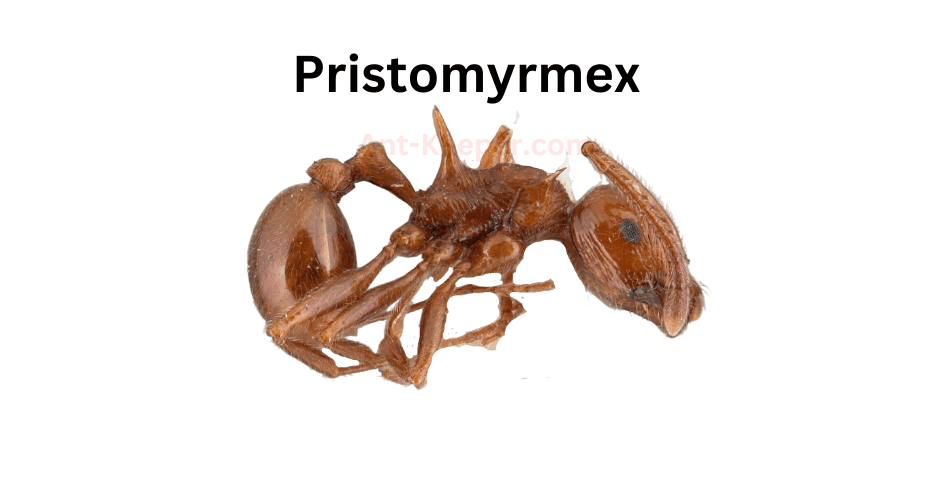
Pristomyrmex is a genus of ants that belongs to the subfamily Myrmicinae.
The ants in this genus are small in size, measuring between 2-4mm in length.
They are known for their distinctive appearance, with a slender and elongated body shape, and a narrow waist that separates the thorax and abdomen.
Pristomyrmex ants are typically found in forested areas, where they nest in soil or leaf litter.
They are known to be aggressive predators, feeding on other insects and small invertebrates.
They are also known to have a mutualistic relationship with certain plant species, where they protect the plants from herbivores in exchange for food and shelter.
One species of Pristomyrmex, Pristomyrmex punctatus, is known for its unique behavior of "playing dead" when threatened.
When disturbed, these ants will curl up their legs and antennae and remain motionless, resembling a dead insect.
This behavior is thought to be a defense mechanism against predators.
Overall, Pristomyrmex ants are an important part of forest ecosystems, playing a role in both predation and mutualism.
Their unique appearance and behavior make them an interesting subject for study and observation.
58) Probolomyrmex
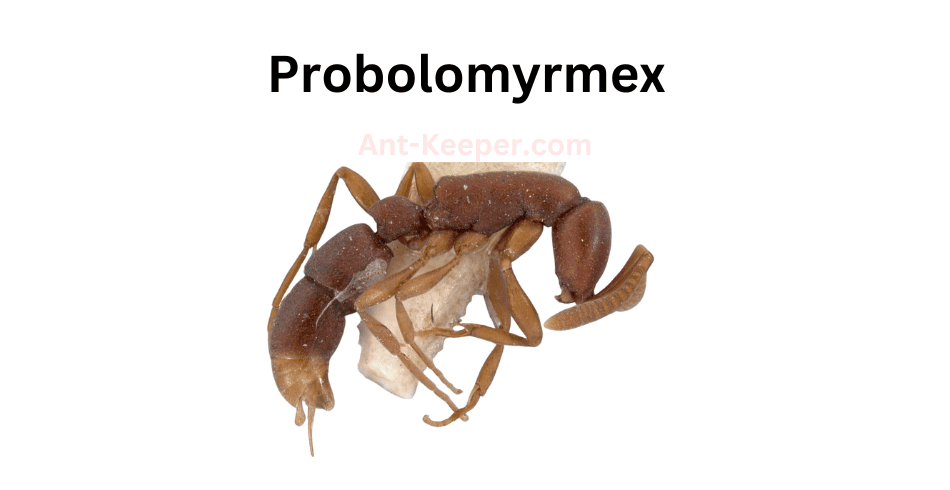
Probolomyrmex is a genus of ants that belongs to the subfamily Proceratiinae.
These ants are known for their unique morphology, which includes a long and slender body, a narrow head, and elongated mandibles.
The genus is characterized by the presence of a distinct petiole, which separates the thorax and the abdomen.
Probolomyrmex ants are typically found in tropical and subtropical regions, where they inhabit a variety of habitats, including forests, grasslands, and deserts.
They are known to be highly aggressive and territorial, often engaging in fierce battles with other ant species.
One of the most interesting aspects of Probolomyrmex ants is their social behavior.
These ants are known to be highly organized, with a well-defined caste system that includes workers, soldiers, and reproductive individuals.
The workers are responsible for foraging, nest maintenance, and caring for the young, while the soldiers defend the colony against predators and other threats.
Despite their small size, Probolomyrmex ants play an important role in their ecosystem.
They are known to be efficient predators, feeding on a variety of insects and other small invertebrates.
They also help to aerate the soil and distribute nutrients, which can have a positive impact on plant growth.
Overall, Probolomyrmex ants are a fascinating and important group of insects that are worthy of further study and conservation efforts.
59) Hairy Curltail Ants, Proceratium
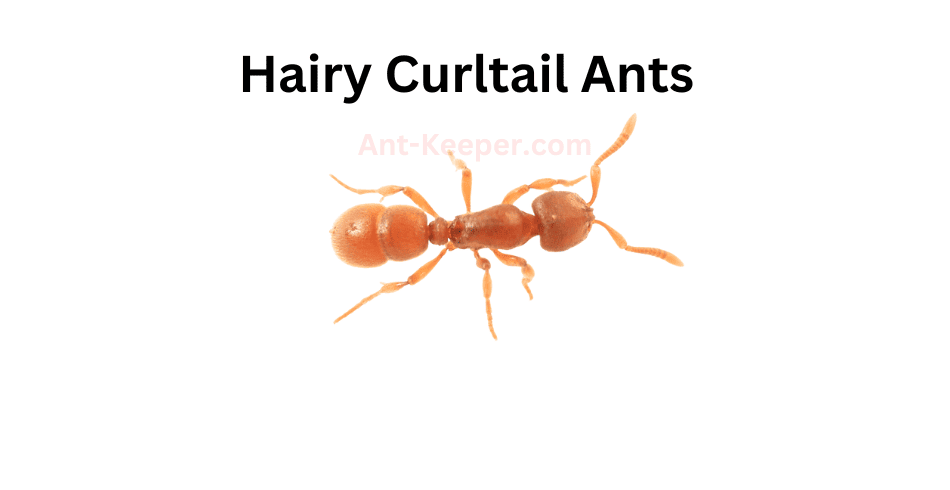
The Hairy Curltail Ant (Camponotus pilicornis) is a species of ant belonging to the genus Camponotus.
These ants are known for their distinctive hairy appearance, which covers their entire body.
The hairs on their body are long and curly, giving them a unique and striking appearance.
Hairy Curltail Ants are typically found in forested areas, where they build their nests in dead wood or under rocks.
They are known to be highly territorial and will aggressively defend their nests against intruders.
These ants are also known to be omnivorous, feeding on a variety of food sources including insects, nectar, and honeydew.
The Hairy Curltail Ant is a relatively large ant species, with workers measuring between 6-12mm in length.
The queen ant is even larger, measuring up to 15mm in length.
These ants are also known for their strong mandibles, which they use to defend their nests and capture prey.
One interesting aspect of the Hairy Curltail Ant is their ability to communicate with each other through the use of pheromones.
These chemical signals are used to mark trails, identify nestmates, and coordinate foraging activities.
Overall, the Hairy Curltail Ant is a fascinating species of ant with a unique appearance and interesting behaviors.
Their presence in forested areas can have important ecological implications, as they play a role in the ecosystem as both predators and scavengers.
60) Pseudolasius
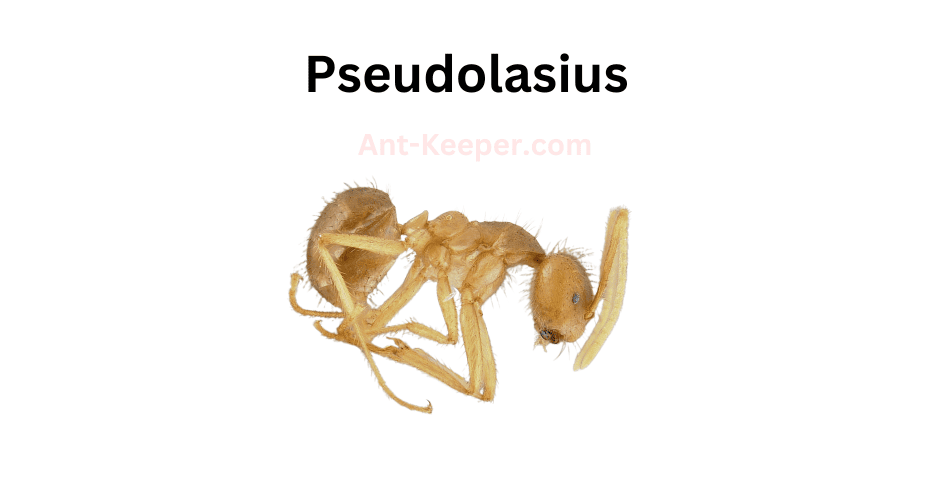
Pseudolasius is a genus of ants belonging to the family Formicidae.
These ants are known for their small size and distinctive appearance, with workers measuring between 2-3 mm in length.
The genus is characterized by the presence of a single petiolar node and a lack of spines on the mesosoma.
Pseudolasius ants are typically found in forested areas, where they forage for food and build their nests in soil or leaf litter.
They are known to feed on a variety of food sources, including insects, nectar, and honeydew produced by sap-sucking insects.
One interesting aspect of Pseudolasius behavior is their tendency to form large colonies with multiple queens.
This is in contrast to many other ant species, which typically have a single queen per colony.
The presence of multiple queens allows Pseudolasius colonies to grow rapidly and efficiently exploit food resources.
Despite their small size, Pseudolasius ants play an important role in forest ecosystems.
They are known to disperse seeds and contribute to soil health through their nest-building activities.
Additionally, they serve as an important food source for many other animals, including birds and small mammals.
Overall, Pseudolasius ants are a fascinating and important group of insects that play a vital role in forest ecosystems.
61) Rhopalothrix
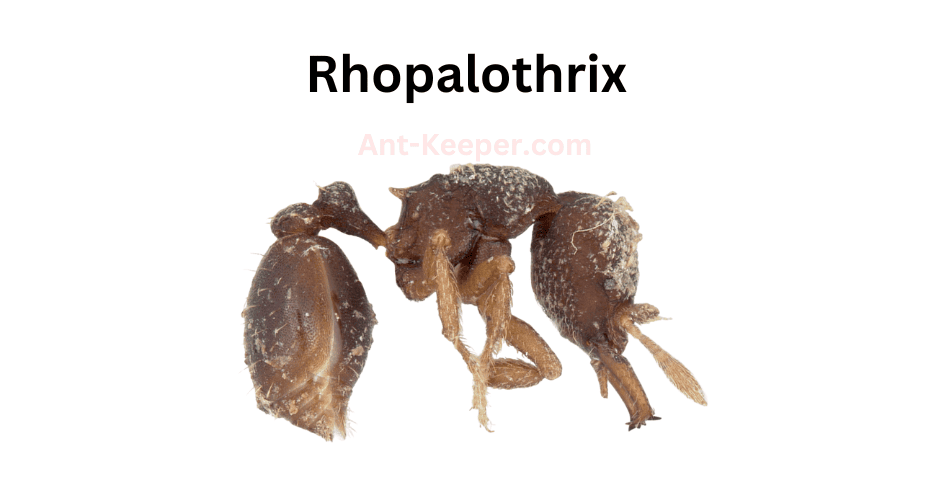
Rhopalothrix is a genus of ants belonging to the family Formicidae.
These ants are known for their unique morphology and behavior.
The workers of Rhopalothrix are small in size, measuring between 2-4 mm in length.
They have a distinct head shape, with a narrow and elongated head that is wider at the base.
The antennae of Rhopalothrix are also elongated and have a distinct club-like shape at the end.
Rhopalothrix ants are known for their cryptic behavior.
They are often found living in small colonies in the leaf litter or soil.
These ants are also known for their specialized diet, which consists of small arthropods such as mites and springtails.
Rhopalothrix ants have been observed using their elongated heads to probe into small crevices and cracks in the soil to capture their prey.
One of the most interesting aspects of Rhopalothrix ants is their reproductive behavior.
Unlike most ants, Rhopalothrix colonies are often headed by a single queen.
However, in some species, multiple queens may be present in a colony.
These queens are known to engage in a behavior called "pleometrosis," where they work together to establish a new colony.
This behavior is rare in ants and is thought to be an adaptation to living in harsh environments.
Overall, Rhopalothrix ants are a fascinating group of insects with unique morphology and behavior.
Their specialized diet and reproductive behavior make them an important subject of study for entomologists and ecologists alike.
62) Fierce Pennet And Pavement Ants, Rhoptromyrmex
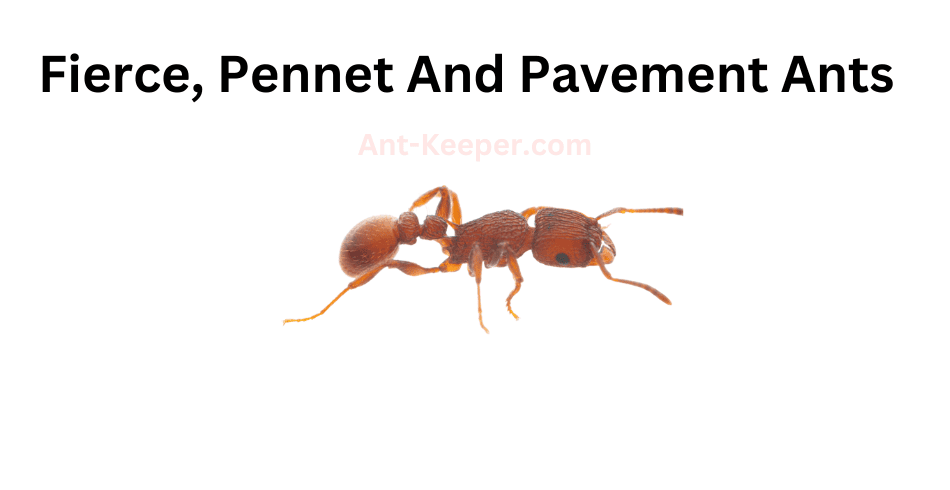
The Fierce Pennet Ant and Pavement Ant are two species of ants that are commonly found in urban and suburban environments.
Both species belong to the Formicidae family and are known for their aggressive behavior towards other ants and insects.
The Fierce Pennet Ant, also known as Tetramorium caespitum, is a small ant species that typically measures between 2.5 and 3.5 mm in length.
They are reddish-brown in color and have a distinctive heart-shaped head.
Fierce Pennet Ants are known for their aggressive behavior towards other ant species and will often engage in territorial battles to defend their colonies.
Pavement Ants, also known as Tetramorium immigrans, are slightly larger than Fierce Pennet Ants, measuring between 2.5 and 4 mm in length.
They are dark brown to black in color and have a distinct thorax with parallel lines.
Pavement Ants are commonly found in urban environments and are known for their ability to nest in cracks and crevices in pavement and concrete.
Both Fierce Pennet and Pavement Ants are omnivorous and will feed on a variety of food sources, including insects, seeds, and sugary substances.
They are also known for their ability to form large colonies, with some colonies containing thousands of individual ants.
Despite their small size, both Fierce Pennet and Pavement Ants can be a nuisance to humans, particularly when they invade homes and buildings in search of food and shelter.
However, they also play an important role in the ecosystem, helping to control populations of other insects and serving as a food source for larger animals.
63) Rhytidoponera
Rhytidoponera is a genus of ants belonging to the subfamily Ponerinae.
One of the species in this genus is Rhytidoponera rabe, commonly known as the Rabe ant.
These ants are small in size, measuring around 5-6 mm in length.
They have a dark brown or black coloration and a shiny exoskeleton.
Rhytidoponera rabe ants are known for their aggressive behavior and are often found in large colonies.
They are primarily ground-dwelling ants and can be found in a variety of habitats, including forests, grasslands, and urban areas.
These ants are omnivorous and feed on a variety of food sources, including insects, nectar, and honeydew.
The Rabe ant is known for its unique defensive behavior.
When threatened, these ants will raise their gasters (abdomens) and release a chemical substance that acts as a deterrent to predators.
This behavior is known as "gaster-flagging" and is a common defensive mechanism in many ant species.
Rhytidoponera rabe ants are also known for their role in seed dispersal.
They are attracted to the elaiosomes (fleshy appendages) of seeds and will carry them back to their nests.
The seeds are then discarded in the nest, where they can germinate and grow.
Overall, Rhytidoponera rabe ants are fascinating creatures with unique behaviors and important ecological roles.
64) Romblonella
Romblonellabe is a species of ant that belongs to the family Formicidae.
These ants are known for their unique physical characteristics and behavior.
They are small in size, measuring only a few millimeters in length, and have a dark brown or black coloration.
The workers of this species have a distinctively elongated head and mandibles that are used for cutting and carrying food.
Romblonellabe ants are typically found in forested areas, where they build their nests in soil or leaf litter.
They are known to be highly territorial and aggressive towards other ant species.
These ants are also known for their ability to communicate with each other through the use of pheromones.
They use these chemical signals to mark their territory, locate food sources, and coordinate their activities.
One interesting behavior of Romblonellabe ants is their tendency to form large foraging trails.
These trails can stretch for several meters and are used to transport food back to the nest.
The workers of this species are also known to exhibit a high degree of division of labor, with some individuals specializing in foraging, while others focus on caring for the brood or defending the nest.
Overall, Romblonellabe ants are fascinating creatures that play an important role in their ecosystem.
Their unique physical characteristics and behavior make them a subject of interest for scientists and nature enthusiasts alike.
65) Simopone
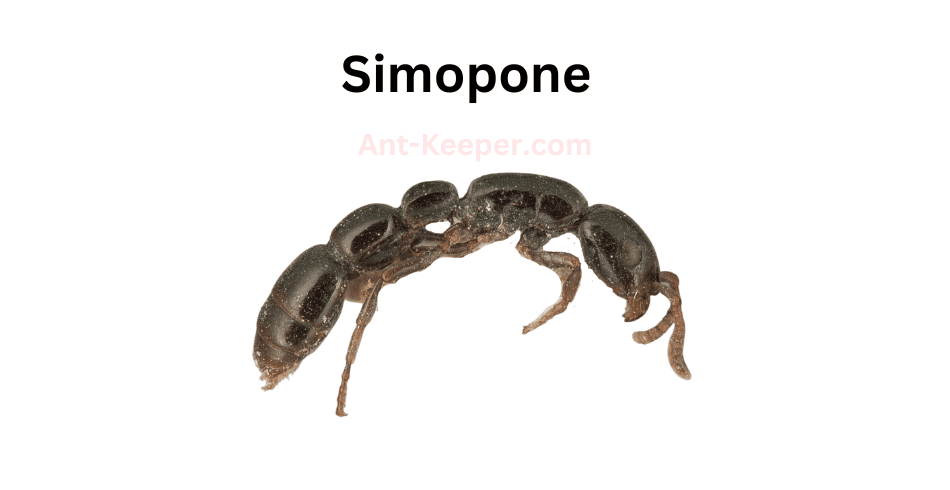
Simoponebe is a species of ant that belongs to the Formicidae family.
These ants are small in size, measuring only a few millimeters in length.
They are known for their aggressive behavior and are often found in large colonies.
Simoponebe ants are typically found in forested areas, where they build their nests in the soil or under rocks.
They are omnivorous, feeding on a variety of insects, fruits, and seeds.
These ants are also known to engage in trophallaxis, a behavior where they exchange food with other members of their colony.
One unique characteristic of Simoponebe ants is their ability to produce formic acid.
This acid is used as a defense mechanism against predators and can cause irritation or even blindness in animals that come into contact with it.
Simoponebe ants are also known for their symbiotic relationship with certain species of plants.
They will protect these plants from herbivores in exchange for a sugary substance produced by the plant.
Overall, Simoponebe ants play an important role in their ecosystem as both predators and protectors.
Their aggressive behavior and ability to produce formic acid make them a formidable opponent, while their symbiotic relationships with plants help to maintain a healthy balance in their environment.
66) Fire Ants, Solenopsis
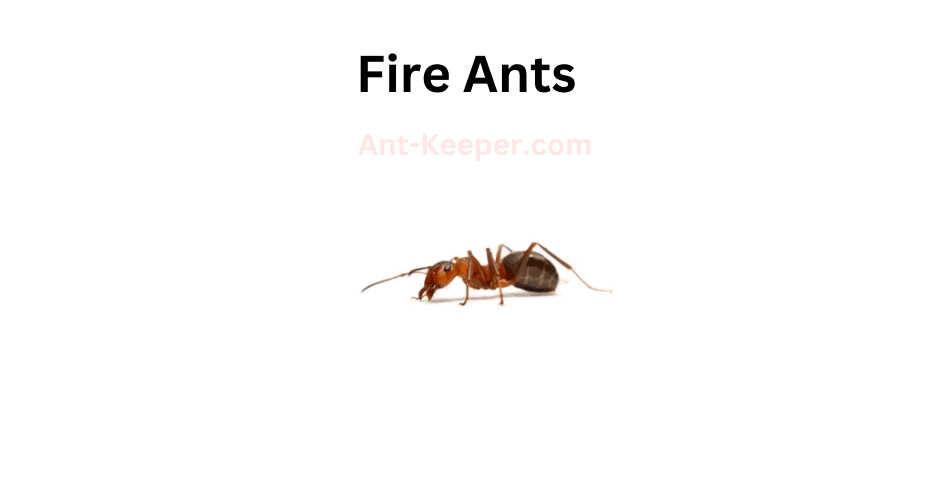
Fire ants are a type of ant that belongs to the Solenopsis genus.
They are known for their reddish-brown color and their aggressive behavior.
Fire ants are social insects that live in colonies, which can range in size from a few hundred to several thousand individuals.
Fire ants are omnivorous and feed on a variety of foods, including insects, seeds, and other small animals.
They are also known to scavenge for food and will often invade other ant colonies to steal their resources.
One of the most distinctive features of fire ants is their ability to sting.
They have a stinger located at the end of their abdomen, which they use to inject venom into their prey or enemies.
Fire ant stings can be painful and can cause an allergic reaction in some people.
Fire ants are also known for their ability to build large mounds, which can reach heights of up to 18 inches.
These mounds are made of soil and are used as a nesting site for the colony.
Fire ants are considered to be an invasive species in many parts of the world, as they can cause damage to crops and wildlife.
They are also a nuisance to humans, as their stings can be painful and their mounds can be unsightly.
Overall, fire ants are fascinating insects that have adapted to thrive in a variety of environments.
While they can be a nuisance, they are an important part of the ecosystem and play a vital role in controlling insect populations.
67) Sphinctomyrmex
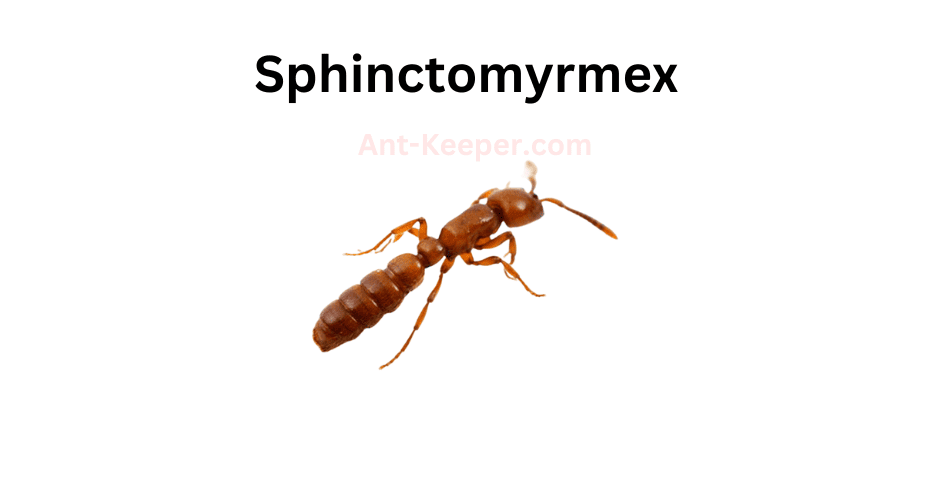
Sphinctomyrmex is a genus of ants that belongs to the subfamily Myrmicinae.
These ants are known for their unique morphology, which includes a distinct constriction between the thorax and abdomen, giving them their common name of "waist ants."
Sphinctomyrmex ants are relatively small, with workers measuring between 2-5mm in length.
They are typically reddish-brown in color, with a shiny exoskeleton.
These ants are known for their aggressive behavior, and will readily defend their nests against intruders.
One of the most interesting aspects of Sphinctomyrmex ants is their reproductive strategy.
Unlike many other ant species, Sphinctomyrmex queens do not mate with multiple males.
Instead, they mate with a single male and store his sperm in a specialized organ called the spermatheca.
This allows the queen to produce offspring with a high degree of relatedness, which may confer certain advantages in terms of colony cohesion and cooperation.
Sphinctomyrmex ants are found in a variety of habitats, including forests, grasslands, and deserts.
They are known to forage on the ground and in the understory, and will feed on a variety of food sources, including insects, nectar, and honeydew.
Overall, Sphinctomyrmex ants are a fascinating group of insects that exhibit a number of unique traits and behaviors.
Their distinctive morphology, aggressive behavior, and unusual reproductive strategy make them a subject of interest for researchers and ant enthusiasts alike.
68) Miniature Trap-Jaw Ants, Strumigenys

The Miniature Trap-Jaw Ants, scientifically known as Odontomachus sp., are a species of ants that belong to the family Formicidae.
These ants are known for their unique and powerful mandibles, which they use to capture prey and defend their colonies.
The Miniature Trap-Jaw Ants are relatively small in size, measuring only a few millimeters in length.
They have a dark brown or black coloration and a slender body shape.
Their most distinctive feature is their mandibles, which are elongated and can snap shut with incredible force.
These mandibles are used to capture prey, crush seeds, and defend the colony against predators.
The Miniature Trap-Jaw Ants are found in a variety of habitats, including forests, grasslands, and deserts.
They are known to be active during the day and are often seen foraging for food.
These ants are omnivorous and feed on a variety of food sources, including insects, nectar, and seeds.
The Miniature Trap-Jaw Ants are social insects and live in colonies that can range in size from a few dozen to several thousand individuals.
The colony is typically led by a queen, who is responsible for laying eggs and maintaining the colony's population.
The workers are responsible for foraging, caring for the young, and defending the colony.
Overall, the Miniature Trap-Jaw Ants are fascinating insects that have evolved unique adaptations to survive in their environment.
Their powerful mandibles and social behavior make them an important part of many ecosystems.
69) Tapinoma

Tapinoma is a genus of ants that belongs to the family Formicidae.
The species Tapinoma is a small ant that measures about 2-3 mm in length.
They are commonly found in urban and suburban areas, and are known to invade homes and buildings in search of food and shelter.
Tapinoma ants are light brown in color and have a slender body with long legs.
They have a distinctively shaped head that is wider than their thorax, and they possess a pair of antennae that are bent at a right angle.
These ants are known for their ability to form large colonies, which can consist of thousands of individuals.
Tapinoma ants are omnivorous and feed on a variety of food sources, including insects, nectar, and honeydew.
They are also known to scavenge for food in garbage cans and other waste areas.
These ants are attracted to sweet and sugary substances, and will often invade kitchens and pantries in search of food.
Tapinoma ants are not known to be aggressive towards humans, but they can become a nuisance when they invade homes and buildings.
They are known to build their nests in wall voids, under floors, and in other hidden areas.
If left unchecked, these ants can cause damage to structures and can contaminate food sources.
Overall, Tapinoma ants are a common pest in many parts of the world.
While they are not harmful to humans, they can be a nuisance when they invade homes and buildings.
Proper pest control measures can help to prevent infestations and keep these ants at bay.
70) Pale-Footed Ants, Technomyrmex

Pale-Footed Ants, also known as Pheidole pallidula, are a species of ant belonging to the family Formicidae.
These ants are typically small in size, measuring around 2-3mm in length, and are characterized by their pale yellowish-brown coloration and distinctive pale-colored feet.
Pale-Footed Ants are known for their highly organized social structure, which is divided into different castes including workers, soldiers, and reproductive individuals.
Workers are responsible for foraging for food, caring for the young, and maintaining the nest, while soldiers are tasked with defending the colony from predators and other threats.
One of the most interesting aspects of Pale-Footed Ant behavior is their ability to engage in "tandem running," a process in which two ants run together, with the follower using its antennae to track the movements of the leader.
This behavior is thought to help the ants navigate their environment more efficiently and locate food sources more quickly.
Pale-Footed Ants are also known for their unique feeding habits, which include a preference for sweet liquids such as nectar and honeydew.
They are also known to engage in trophallaxis, a process in which food is shared between members of the colony through mouth-to-mouth transfer.
Overall, Pale-Footed Ants are a fascinating species with a complex social structure and unique behaviors.
Their small size and inconspicuous appearance make them easy to overlook, but their importance in maintaining ecological balance and contributing to the overall health of their ecosystem should not be underestimated.
71) Pavement Ants, Tetramorium

Pavement ants, also known as Tetramorium caespitum, are a species of ant that belong to the family Formicidae.
These ants are commonly found in urban and suburban areas, where they build their nests in cracks and crevices in pavement, sidewalks, and buildings.
Pavement ants are small in size, measuring between 2.5 to 4 mm in length.
They are typically dark brown or black in color, with lighter colored legs and antennae.
These ants are known for their aggressive behavior and will defend their nests fiercely against intruders.
Pavement ants are omnivorous, feeding on a variety of foods including insects, seeds, and sweet substances such as honeydew and nectar.
They are also known to scavenge for food in garbage cans and other waste areas.
Pavement ants are social insects, living in colonies that can range in size from a few hundred to several thousand individuals.
The colony is typically led by a queen ant, who is responsible for laying eggs and maintaining the colony.
Pavement ants are considered a nuisance pest, as they can invade homes and buildings in search of food and shelter.
They are also known to cause damage to pavement and other structures by excavating soil and creating tunnels.
Overall, pavement ants are a common and adaptable species of ant that play an important role in urban ecosystems.
While they may be a nuisance to humans, they are an important food source for many other animals and help to maintain the balance of the ecosystem.
72) Old World Slender Ants, Tetraponera
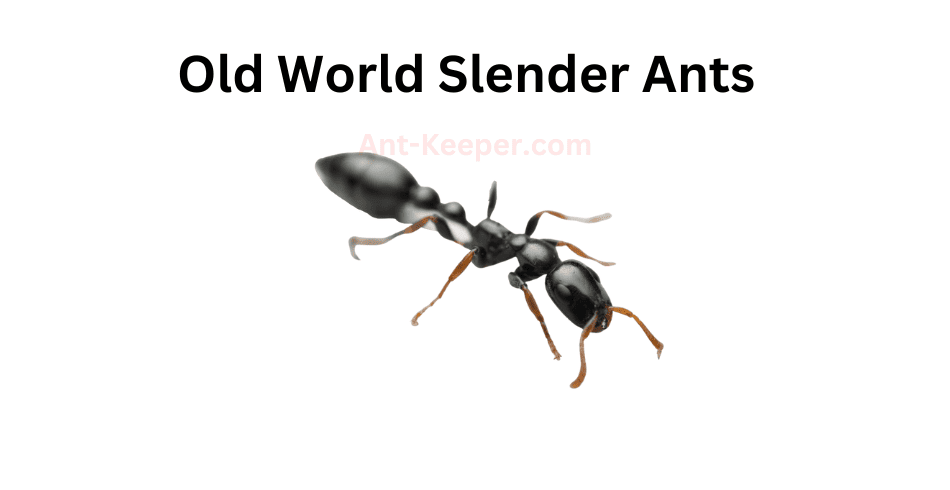
The Old World Slender Ants are a group of ants belonging to the genus Leptomyrmex.
They are found in various regions of the world, including Asia, Africa, and Australia.
These ants are known for their slender and elongated bodies, which are typically brown or black in color.
Old World Slender Ants are social insects that live in colonies.
The colonies are typically small, with only a few hundred individuals.
The ants are highly organized and have a strict hierarchy, with a queen at the top and workers and soldiers below her.
The diet of Old World Slender Ants consists mainly of insects and other small invertebrates.
They are also known to feed on nectar and honeydew produced by aphids and other insects.
Old World Slender Ants are known for their aggressive behavior and are capable of inflicting painful stings.
They are also known to defend their colonies fiercely against intruders.
Overall, the Old World Slender Ants are an interesting and important group of ants that play an important role in their ecosystems.
Their unique physical characteristics and social behavior make them a fascinating subject for scientific study.
73) Turneria
Turneriabe is a species of ant that belongs to the Formicidae family.
These ants are known for their small size, typically measuring between 2-3 millimeters in length.
They have a dark brown or black coloration and a slender body shape.
Turneriabe ants are commonly found in forested areas and are known to be arboreal, meaning they live in trees and other vegetation.
These ants are social insects and live in colonies that can range in size from a few dozen to several thousand individuals.
The colony is typically led by a queen ant, who is responsible for laying eggs and producing new members of the colony.
The other ants in the colony are divided into different castes, including workers, soldiers, and reproductive ants.
Turneriabe ants are known for their aggressive behavior and will defend their colony against any perceived threats.
They have a powerful bite and can release a chemical substance that can cause irritation and pain to predators.
These ants are also known to be scavengers and will feed on a variety of food sources, including insects, fruits, and plant material.
Overall, Turneriabe ants are an important part of the ecosystem and play a crucial role in maintaining the balance of nature.
They are fascinating creatures that have adapted to their environment in unique ways and continue to thrive in their natural habitats.
74) Vollenhovia

Vollenhoviabe is a species of ant that belongs to the Formicidae family.
It is a relatively small ant, with workers measuring around 2-3 millimeters in length.
The ant has a dark brown or black coloration, with a shiny exoskeleton that is covered in fine hairs.
Vollenhoviabe ants are known for their aggressive behavior, particularly when defending their nests.
They are also highly territorial and will fiercely defend their foraging areas from other ant species.
Despite their small size, Vollenhoviabe ants are capable of inflicting painful bites on humans and other animals.
The ant is primarily found in forested areas, where it nests in soil or under rocks.
It is an omnivorous species, feeding on a variety of food sources including insects, nectar, and plant sap.
Vollenhoviabe ants are also known to cultivate and protect aphids, which they use as a source of honeydew.
The reproductive cycle of Vollenhoviabe ants is similar to that of other ant species.
The queen ant is responsible for laying eggs, which hatch into larvae and eventually develop into workers.
The queen also produces male ants and new queen ants during the mating season.
Overall, Vollenhoviabe ants are an important part of the ecosystem, playing a vital role in soil health and nutrient cycling.
While they may be a nuisance to humans at times, they are a fascinating and complex species that deserves our respect and admiration.
75) Vombisidris
Vombisidrisbe is a species of ant that belongs to the Formicidae family.
These ants are known for their unique physical characteristics and behavior.
They have a dark brown or black coloration and are relatively small in size, measuring only a few millimeters in length.
One of the most distinctive features of Vombisidrisbe ants is their mandibles.
These ants have large, powerful mandibles that they use to capture and subdue their prey.
They are also known for their aggressive behavior and will not hesitate to attack other insects or even humans if they feel threatened.
Vombisidrisbe ants are typically found in forested areas, where they build their nests in the soil or in decaying wood.
They are omnivorous and will feed on a variety of food sources, including insects, fruits, and nectar.
These ants are also known for their social behavior.
They live in colonies that can range in size from a few dozen to several thousand individuals.
Within the colony, there is a strict hierarchy, with the queen ant at the top.
The queen is responsible for laying eggs, while the worker ants are responsible for foraging, caring for the young, and defending the colony.
Overall, Vombisidrisbe ants are fascinating creatures that play an important role in their ecosystem.
While they may be small, they are powerful predators and are essential to maintaining the balance of nature.
76) Wasmannia
The Wasmanniabe ant is a fascinating species that belongs to the Formicidae family.
It is known for its unique physical characteristics and behavior, which make it stand out from other ant species.
One of the most distinctive features of the Wasmanniabe ant is its size.
It is relatively small, measuring only a few millimeters in length.
However, what it lacks in size, it makes up for in strength.
This ant is incredibly strong and can carry objects that are many times its own weight.
Another interesting aspect of the Wasmanniabe ant is its social behavior.
It lives in colonies that can consist of thousands of individuals.
The colony is led by a queen ant, who is responsible for laying eggs and ensuring the survival of the colony.
The other ants in the colony have specific roles, such as foraging for food, caring for the young, and defending the colony from predators.
The Wasmanniabe ant is also known for its intelligence.
It has been observed using tools to gather food and navigate its environment.
Additionally, it has a complex communication system that allows it to coordinate with other ants in the colony.
Overall, the Wasmanniabe ant is a remarkable species that has adapted to its environment in unique ways.
Its physical strength, social behavior, and intelligence make it a fascinating subject for scientific study.
77) Emerys Sneaking Ants, Cardiocondyla Emeryi
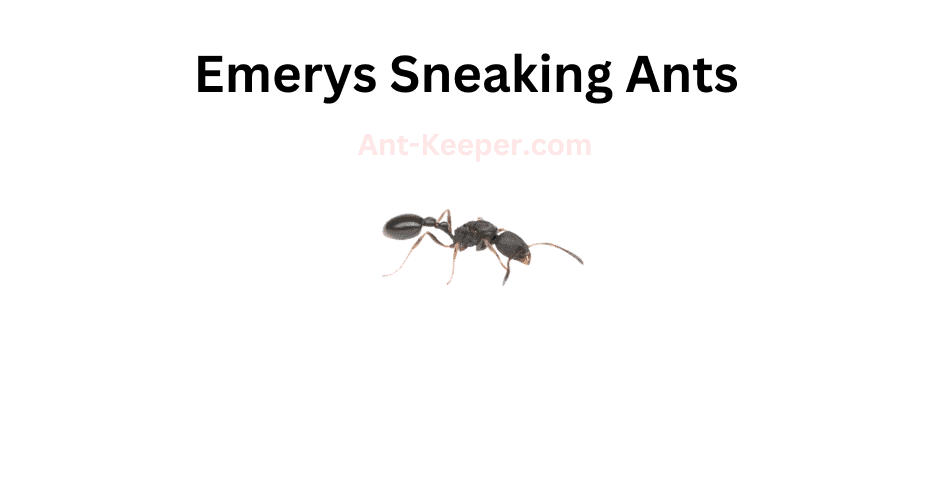
Emery's Sneaking Ants, also known as Pheidole emeryi, are a species of ant that belong to the family Formicidae.
These ants are known for their ability to sneak into other ant colonies and steal their resources without being detected.
Emery's Sneaking Ants are small in size, measuring only 2-3 mm in length.
They have a dark brown or black coloration and a distinctively large head in proportion to their body.
Their mandibles are also relatively large, which allows them to carry larger food items back to their own colony.
These ants are primarily found in forested areas and are known to be opportunistic feeders.
They will consume a variety of food sources, including other insects, nectar, and honeydew.
However, they are also known to steal food from other ant colonies, which is where they get their name.
Emery's Sneaking Ants have a unique strategy for infiltrating other ant colonies.
They will send out scouts to locate a nearby colony and then send in a small group of worker ants to steal food.
These worker ants will use their small size and agility to sneak past the guards of the other colony and steal food without being detected.
Despite their sneaky behavior, Emery's Sneaking Ants are not considered harmful to other ant colonies.
They do not engage in aggressive behavior and are not known to cause any significant damage to other ant colonies.
However, they are still an interesting species to study and observe in their natural habitat.
78) Crypt Ants, Hypoponera Ragusai

Crypt ants, also known as fungus-growing ants, are a group of ants that cultivate fungi for food.
They are found in various habitats, including forests, grasslands, and deserts.
Crypt ants are known for their unique nesting behavior, as they construct underground chambers to house their fungal gardens.
These ants have a symbiotic relationship with the fungi they cultivate.
The ants provide the fungi with a suitable environment for growth, while the fungi provide the ants with a source of food.
The ants also protect their fungal gardens from other insects and parasites.
Crypt ants are social insects, living in colonies that can range from a few dozen to several thousand individuals.
The colonies are organized into castes, with the queen being the largest and most important member.
The queen is responsible for laying eggs, while the workers are responsible for tending to the fungal gardens and caring for the young.
One interesting aspect of crypt ants is their ability to create "satellite" nests.
These nests are smaller chambers located near the main nest, and they serve as storage areas for food and as a place for the queen to lay eggs.
The satellite nests are connected to the main nest by underground tunnels, allowing the ants to move between them.
Overall, crypt ants are fascinating insects that have developed a unique way of obtaining food.
Their symbiotic relationship with fungi and their complex nesting behavior make them an important species to study in the field of entomology.
79) Flower Ants, Monomorium Floricola
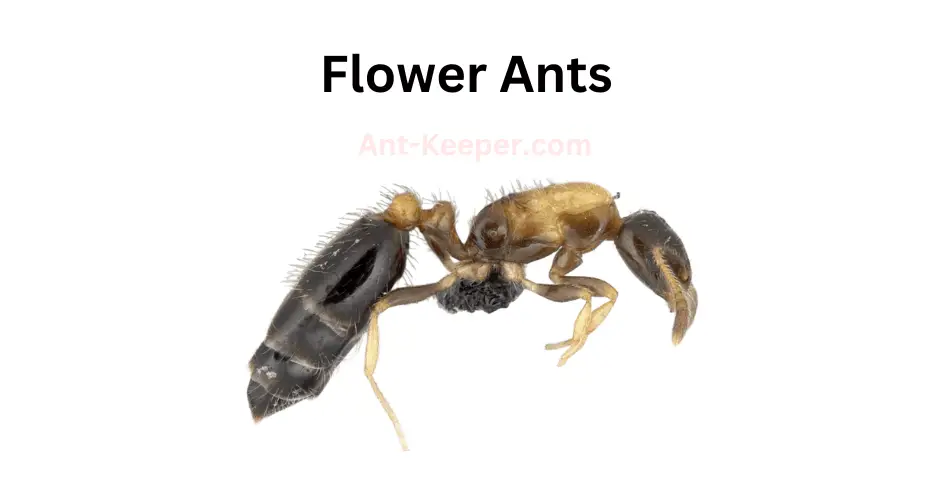
The Flower Ant, also known as the Camponotus consobrinus, is a species of ant that belongs to the Camponotus genus.
These ants are commonly found in various habitats, including forests, grasslands, and gardens.
They are known for their unique behavior of collecting nectar and pollen from flowers, hence their name.
The Flower Ants are relatively large, with workers measuring up to 12mm in length.
They have a black or dark brown body with reddish-brown legs and antennae.
The queen ants are even larger, measuring up to 18mm in length.
These ants are known for their strong mandibles, which they use to cut through plant material and defend their colony.
The Flower Ants are social insects that live in colonies consisting of a queen, workers, and males.
The queen is responsible for laying eggs, while the workers take care of the young and forage for food.
The males are responsible for mating with the queen.
One of the unique characteristics of the Flower Ants is their relationship with plants.
They are known to collect nectar and pollen from flowers, which they use as a source of food.
In return, they help pollinate the flowers, which is essential for the plants' reproduction.
The Flower Ants are also known for their aggressive behavior towards other ant species.
They will defend their territory and resources fiercely, often engaging in battles with other ant colonies.
In conclusion, the Flower Ants are a fascinating species of ant that have a unique relationship with plants.
They play an important role in pollination and are essential for the ecosystem.
Their aggressive behavior towards other ant species also highlights their importance in maintaining the balance of the ecosystem.
80) Pharaoh Ants, Monomorium Pharaonis
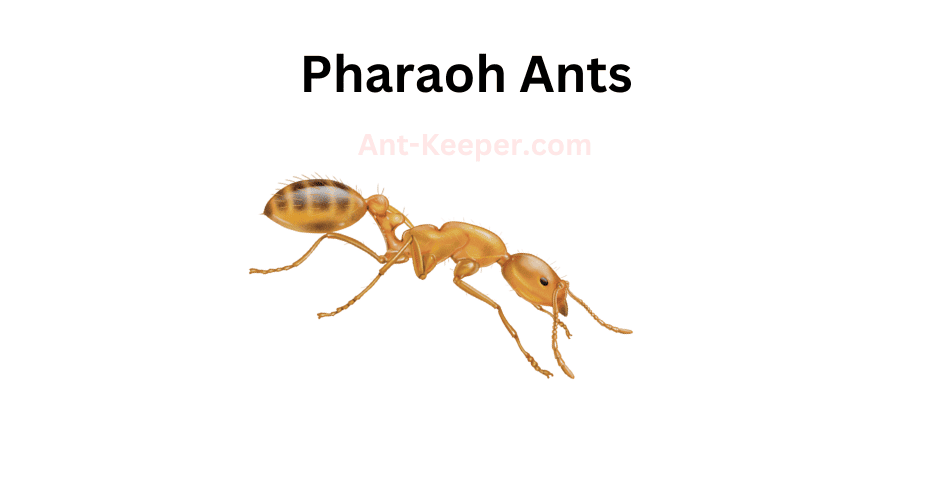
Pharaoh ants, scientifically known as Monomorium pharaonis, are small, yellowish-brown ants that measure about 2 mm in length.
They are commonly found in indoor environments such as homes, hospitals, and commercial buildings.
Pharaoh ants are known for their ability to form large colonies with multiple queens.
These colonies can contain thousands of workers and can quickly infest a building.
They are also known for their ability to adapt to changing environments and can easily relocate their nests if disturbed.
Pharaoh ants are omnivorous and feed on a variety of foods including sweets, meats, and other insects.
They are also known to feed on human fluids such as blood and wound exudates.
Due to their small size and ability to hide in small crevices, pharaoh ants can be difficult to control.
They are known to be resistant to many common insecticides and can quickly rebound after treatment.
Pharaoh ants are also a concern in healthcare settings as they can transmit diseases such as salmonella and staphylococcus.
They can also contaminate sterile equipment and supplies.
Overall, pharaoh ants are a common pest in indoor environments and can be difficult to control.
It is important to seek professional pest control services to effectively manage infestations.
81) Ochetellus Glaber
Ochetellus Glaber, commonly known as the smooth ant, is a species of ant belonging to the family Formicidae.
These ants are small in size, measuring only about 2-3mm in length.
They have a shiny, smooth appearance due to the lack of hairs on their bodies.
The smooth ant is known for its aggressive behavior towards other ant species.
They are often found in large colonies, with a single queen leading the group.
These ants are omnivorous, feeding on a variety of food sources including insects, nectar, and honeydew.
One interesting characteristic of Ochetellus Glaber is their ability to form symbiotic relationships with other insects.
They are known to protect and care for aphids, in exchange for the sweet honeydew that the aphids produce.
The smooth ant is also known for its ability to adapt to different environments.
They can be found in a variety of habitats, including forests, grasslands, and urban areas.
They are able to survive in both hot and cold climates, making them a resilient species.
Overall, Ochetellus Glaber is a fascinating species of ant with unique characteristics and behaviors.
Their ability to form symbiotic relationships and adapt to different environments make them an important part of the ecosystem.
82) Ochetellus Glaber Janthina
Ochetellus Glaber Janthinabe is a species of ant that belongs to the family Formicidae.
These ants are commonly known as the "smooth brown ant" due to their smooth and shiny appearance.
They are small in size, measuring only about 2-3mm in length.
Ochetellus Glaber Janthinabe ants are known for their aggressive behavior towards other ant species.
They are territorial and will defend their nests fiercely.
These ants are also known to be scavengers, feeding on a variety of food sources including insects, nectar, and honeydew.
One interesting characteristic of Ochetellus Glaber Janthinabe ants is their ability to form supercolonies.
These supercolonies can consist of thousands of individual ants and can span over large areas.
This behavior is thought to be a result of their ability to adapt to changing environments and their strong social organization.
Overall, Ochetellus Glaber Janthinabe ants are fascinating creatures that play an important role in their ecosystem.
Their aggressive behavior and scavenging habits make them a formidable force in the ant world, while their ability to form supercolonies showcases their adaptability and social organization.
83) Ochetellus Glaber Sommeri
Ochetellus Glaber Sommeribe is a species of ant that belongs to the family Formicidae.
This ant is commonly known as the "smooth sugar ant" due to its smooth and shiny appearance.
The workers of this species are small in size, measuring around 3-4 mm in length.
They have a dark brown to black coloration and lack any noticeable hairs on their body.
Ochetellus Glaber Sommeribe is a social insect that lives in colonies.
The colonies are usually small, consisting of a few hundred individuals.
The queen ant is responsible for laying eggs, while the workers take care of the young and forage for food.
The diet of this ant consists mainly of sugary substances, such as nectar and honeydew.
This ant is commonly found in urban areas, where it can be seen foraging for food in gardens, parks, and around buildings.
It is also known to invade homes in search of food.
Despite its small size, Ochetellus Glaber Sommeribe can be a nuisance pest, especially when it forms large colonies.
Overall, Ochetellus Glaber Sommeribe is an interesting species of ant that plays an important role in the ecosystem.
Its ability to forage for sugary substances makes it an important pollinator, while its presence in urban areas can help control other pest populations.
84) Longhorn Crazy Ants, Paratrechina Longicornis
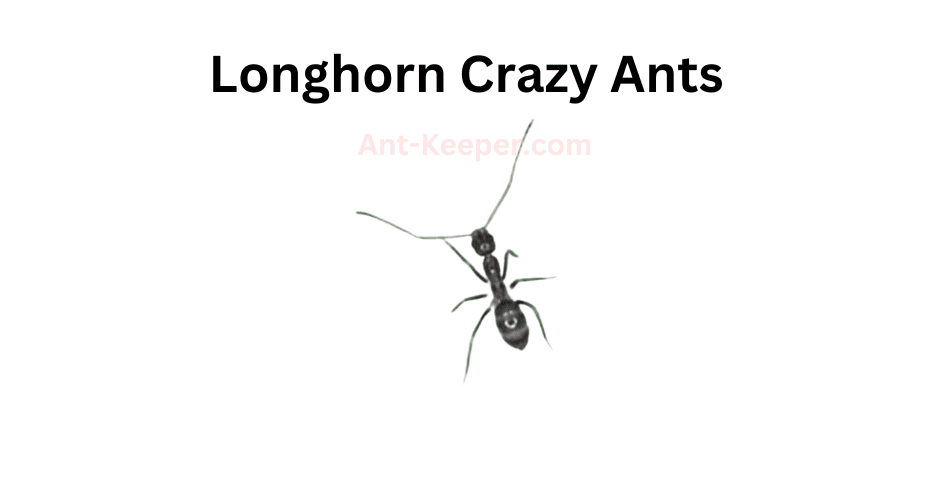
The Longhorn Crazy Ant (Paratrechina longicornis) is a small, dark brown ant species that is known for its erratic and unpredictable behavior.
These ants are typically found in warm, humid environments and are often found in urban areas, where they can be a nuisance to homeowners and businesses.
One of the most distinctive features of the Longhorn Crazy Ant is its long, slender antennae, which can be up to twice the length of its body.
These antennae are used to detect chemical signals from other ants and to navigate through their environment.
Longhorn Crazy Ants are omnivorous and will feed on a wide variety of foods, including insects, fruits, and sweet liquids.
They are also known to be scavengers, and will often invade other ant colonies to steal food and resources.
One of the most interesting aspects of the Longhorn Crazy Ant is its behavior.
These ants are known for their erratic movements and unpredictable behavior, which can make them difficult to control.
They are also known for their ability to form large, sprawling colonies that can quickly take over an area.
Despite their small size, Longhorn Crazy Ants can be a significant pest problem, particularly in urban areas.
They can invade homes and businesses, contaminate food, and cause damage to electrical equipment.
As a result, it is important to take steps to control these ants and prevent infestations from occurring.
85) Big Headed Ants, Pheidole Megacephala

Big Headed Ants, also known as Pheidole megacephala, are a species of ant that belong to the family Formicidae.
These ants are known for their distinctive large heads, which are used for defense and communication within their colonies.
Big Headed Ants are typically found in tropical and subtropical regions, where they build their nests in soil, leaf litter, and other organic matter.
They are omnivorous, feeding on a variety of insects, seeds, and other small organisms.
One of the most interesting aspects of Big Headed Ants is their social behavior.
They live in large colonies, with a queen ant at the center of the hierarchy.
The queen is responsible for laying eggs, while the other ants in the colony perform various tasks such as foraging for food, caring for the young, and defending the colony from predators.
Big Headed Ants are also known for their ability to displace other ant species in their habitats.
They are aggressive and have been known to attack and kill other ants, as well as compete with them for resources.
Despite their aggressive behavior, Big Headed Ants are not considered a major pest species.
However, their ability to displace other ant species and their potential impact on native ecosystems make them an important species to study and monitor.
86) Tropical Fire Ants, Solenopsis Geminata
The Tropical Fire Ant (Solenopsis geminata) is a species of ant that belongs to the family Formicidae.
These ants are known for their aggressive behavior and painful sting, which can cause severe allergic reactions in some individuals.
Tropical Fire Ants are typically reddish-brown in color and range in size from 2 to 6 millimeters in length.
They are commonly found in tropical and subtropical regions, where they build large nests in soil or under rocks.
These ants are omnivorous and feed on a variety of food sources, including insects, seeds, and nectar.
They are also known to tend to aphids and other insects for their honeydew excretions.
Tropical Fire Ants are highly territorial and will aggressively defend their nests against intruders.
They use their powerful mandibles to bite and their stingers to inject venom into their prey or attackers.
The venom of Tropical Fire Ants contains a mixture of alkaloids and proteins that can cause pain, swelling, and itching in humans.
In some cases, the venom can also cause anaphylaxis, a severe allergic reaction that can be life-threatening.
Despite their aggressive behavior and painful sting, Tropical Fire Ants play an important role in their ecosystem.
They help control the populations of other insects and contribute to soil health through their nest-building activities.
87) Ghost Ants, Tapinoma Melanocephalum
Ghost ants, also known as tapinoma melanocephalum, are a species of small, pale-colored ants that are commonly found in tropical and subtropical regions around the world.
These ants are known for their elusive behavior and their ability to quickly disappear when disturbed, earning them their ghostly name.
Ghost ants are typically only about 1.5 to 2 millimeters in length, making them one of the smallest ant species.
They have a pale yellow or white body with a dark head and thorax, which gives them a distinctive appearance.
Ghost ants are also known for their ability to quickly move and navigate through narrow spaces, making them difficult to control in indoor environments.
Ghost ants are omnivorous and will feed on a variety of food sources, including sweets, meats, and fats.
They are also known to feed on other insects and their larvae.
Ghost ants are social insects and live in large colonies, with a single queen ant responsible for laying eggs and producing new workers.
One of the biggest challenges with controlling ghost ants is their ability to quickly adapt to changes in their environment.
They are known to quickly relocate their nests when disturbed, making it difficult to locate and eliminate the colony.
Additionally, ghost ants are resistant to many common insecticides, making it important to use targeted control methods.
Overall, ghost ants are a fascinating and elusive species of ant that can be difficult to control in indoor environments.
Understanding their behavior and biology is key to effectively managing infestations and preventing future problems.
88) Pale-Footed Ants, Technomyrmex Vitiensis

Pale-Footed Ants, also known as Pheidole pallidula, are a species of ant belonging to the family Formicidae.
These ants are typically small in size, measuring around 2-3mm in length, and are characterized by their pale yellowish-brown coloration and distinctive pale-colored feet.
Pale-Footed Ants are known for their highly organized social structure, which is divided into different castes including workers, soldiers, and reproductive individuals.
Workers are responsible for foraging for food, caring for the young, and maintaining the nest, while soldiers are tasked with defending the colony from predators and other threats.
One of the most interesting aspects of Pale-Footed Ant behavior is their ability to engage in "tandem running," a process in which two ants run together, with the follower using its antennae to track the movements of the leader.
This behavior is thought to help the ants navigate their environment more efficiently and locate food sources more quickly.
Pale-Footed Ants are also known for their unique feeding habits, which include a preference for sweet liquids such as nectar and honeydew.
They are also known to engage in trophallaxis, a process in which food is shared between members of the colony through mouth-to-mouth transfer.
Overall, Pale-Footed Ants are a fascinating species with a complex social structure and unique behaviors.
Their small size and inconspicuous appearance make them easy to overlook, but their importance in maintaining ecological balance and contributing to the overall health of their ecosystem should not be underestimated.
89) Guinea Ants, Tetramorium Bicarinatum
The Guinea Ant, also known as the African Ant, is a species of ant that belongs to the Formicidae family.
These ants are known for their aggressive behavior and are often found in large colonies.
The Guinea Ant is a small ant, measuring between 2-3mm in length, and has a dark brown or black coloration.
The Guinea Ant is a highly social insect and lives in large colonies that can contain thousands of individuals.
These ants are known for their aggressive behavior and will defend their colony fiercely against any perceived threat.
They are also known for their ability to quickly adapt to changing environments, which allows them to thrive in a variety of habitats.
The diet of the Guinea Ant consists of a variety of foods, including insects, nectar, and honeydew.
They are also known to scavenge for food and will often invade the nests of other insects to steal their food.
The reproductive system of the Guinea Ant is unique, as it is based on a caste system.
The queen ant is responsible for laying eggs, while the worker ants are responsible for caring for the young and maintaining the colony.
The male ants are responsible for mating with the queen and do not have any other role in the colony.
Overall, the Guinea Ant is a fascinating species of ant that is known for its aggressive behavior and ability to adapt to changing environments.
Their unique reproductive system and social structure make them an interesting subject for scientific study.
90) Pavement Ants, Tetramorium Insolens

Pavement ants, also known as Tetramorium caespitum, are a species of ant that belong to the family Formicidae.
These ants are commonly found in urban and suburban areas, where they build their nests in cracks and crevices in pavement, sidewalks, and buildings.
Pavement ants are small in size, measuring between 2.5 to 4 mm in length.
They are typically dark brown or black in color, with lighter colored legs and antennae.
These ants are known for their aggressive behavior and will defend their nests fiercely against intruders.
Pavement ants are omnivorous, feeding on a variety of foods including insects, seeds, and sweet substances such as honeydew and nectar.
They are also known to scavenge for food in garbage cans and other waste areas.
Pavement ants are social insects, living in colonies that can range in size from a few hundred to several thousand individuals.
The colony is typically led by a queen ant, who is responsible for laying eggs and maintaining the colony.
Pavement ants are considered a nuisance pest, as they can invade homes and buildings in search of food and shelter.
They are also known to cause damage to pavement and other structures by excavating soil and creating tunnels.
Overall, pavement ants are a common and adaptable species of ant that play an important role in urban ecosystems.
While they may be a nuisance to humans, they are an important food source for many other animals and help to maintain the balance of the ecosystem.
91) Groove-Headed Fierce Ants, Tetramorium Simillimum
Groove-Headed Fierce Ants, also known as GFA, are a species of ants that belong to the Formicidae family.
They are known for their aggressive behavior and their ability to defend their colonies fiercely.
The name "groove-headed" comes from the distinct groove on their head that separates their eyes from their antennae.
GFAs are relatively small, measuring only about 3-5 millimeters in length.
They have a dark brown or black coloration and a slender body shape.
Their mandibles are long and sharp, which they use to capture prey and defend their colony.
These ants are social insects and live in large colonies that can contain up to several thousand individuals.
The colony is usually led by a queen ant, who is responsible for laying eggs and maintaining the colony's population.
The workers, which are sterile females, are responsible for foraging for food, caring for the young, and defending the colony.
GFAs are omnivorous and feed on a variety of food sources, including insects, nectar, and honeydew.
They are also known to scavenge for dead animals and consume plant material.
One of the most notable characteristics of GFAs is their aggressive behavior.
They are known to attack and kill other insects, including other ant species.
When threatened, they will swarm and bite their attacker, injecting formic acid into their wound.
This acid can cause pain and irritation to the attacker, and in some cases, can even be lethal.
Overall, GFAs are a fascinating species of ants that exhibit unique behaviors and characteristics.
Their fierce nature and ability to defend their colony make them an important part of their ecosystem.
92) Little Fire Ants, Wasmannia Auropunctata
The Little Fire Ant (Wasmannia auropunctata) is a small, reddish-brown ant species that measures only 1.5 to 3 mm in length.
They are known for their painful sting, which can cause a burning sensation and small blisters on the skin.
Little Fire Ants are native to South and Central America, but have been introduced to other parts of the world through human activity.
They are considered invasive species and have caused significant ecological and economic damage in some areas.
These ants are highly adaptable and can thrive in a variety of habitats, including forests, grasslands, and urban areas.
They are omnivorous and feed on a wide range of food sources, including insects, fruits, and seeds.
Little Fire Ants are social insects that live in colonies with a queen and workers.
They reproduce quickly and can form large colonies with thousands of individuals.
They are known for their aggressive behavior towards other ant species and can outcompete them for resources.
Controlling Little Fire Ant populations can be challenging due to their small size and ability to nest in hard-to-reach areas.
Integrated pest management strategies, such as baiting and chemical treatments, are often used to manage infestations.
Overall, the Little Fire Ant is a fascinating but problematic species that highlights the importance of preventing the introduction of invasive species to new environments.
Check Out Some Of Our Other Ants By Location Posts
| Types Of Ants In Nauru | Nauru, a small island nation located in the Pacific Ocean, is a unique and fascinating place. Despite its small size, Nauru boasts a diverse range ... |
| Types Of Ants In Chihuahua, Mexico | Chihuahua, Mexico is a region located in the northern part of the country, bordering the United States. The area is known for its diverse landscape, ... |
| Types Of Ants In Chaco, Argentina | Chaco, a region located in northern Argentina, is a unique and diverse ecosystem that boasts a variety of flora and fauna. The region is characterized ... |
| Types Of Ants In Croatia | Croatia, located in Southeast Europe, is a country known for its stunning natural beauty and diverse wildlife. The country is bordered by the Adriatic Sea ... |
| Types Of Ants In Germany | Germany, located in central Europe, is a country known for its rich history, culture, and diverse landscapes. From the towering peaks of the Bavarian Alps ... |
